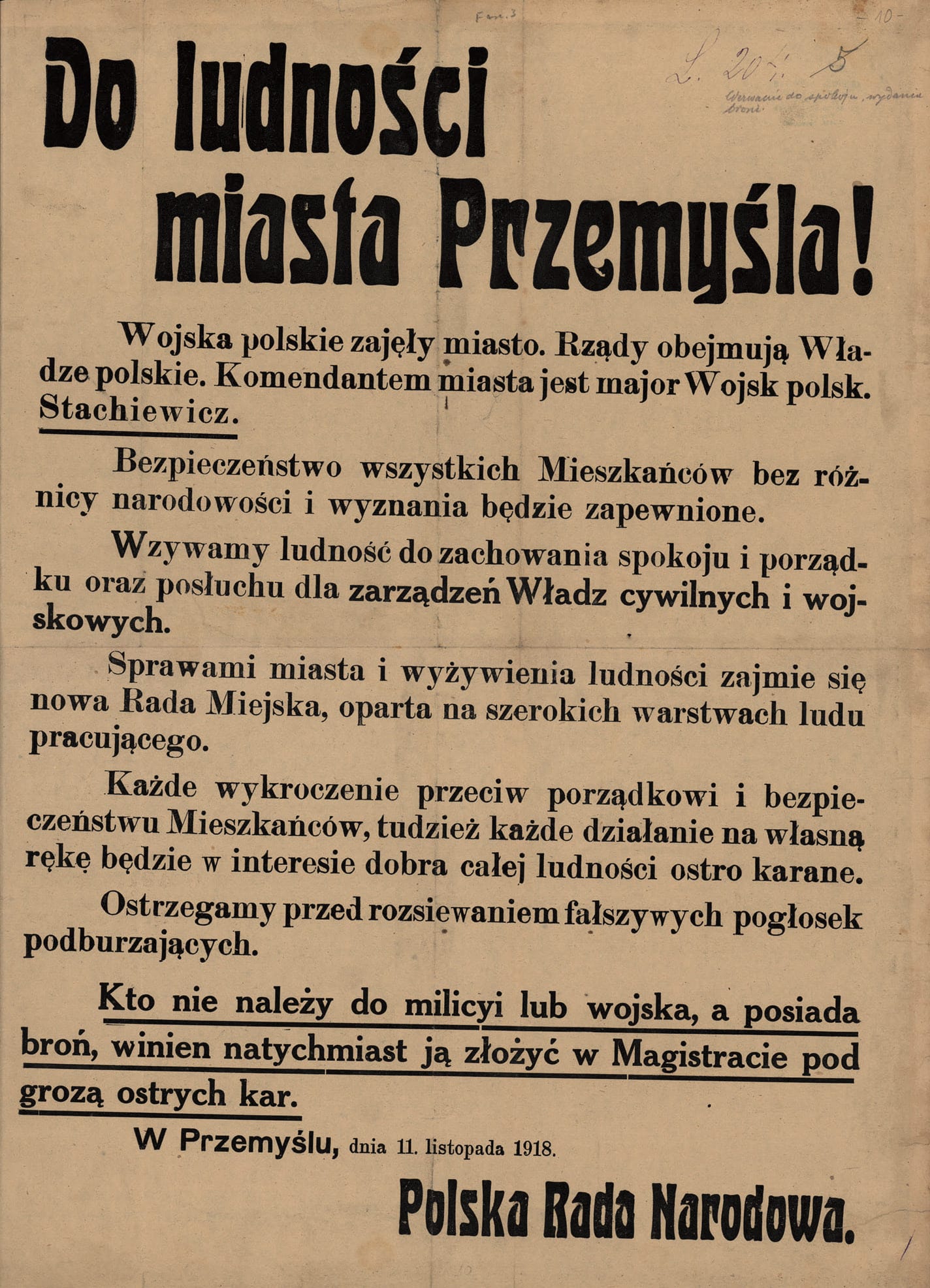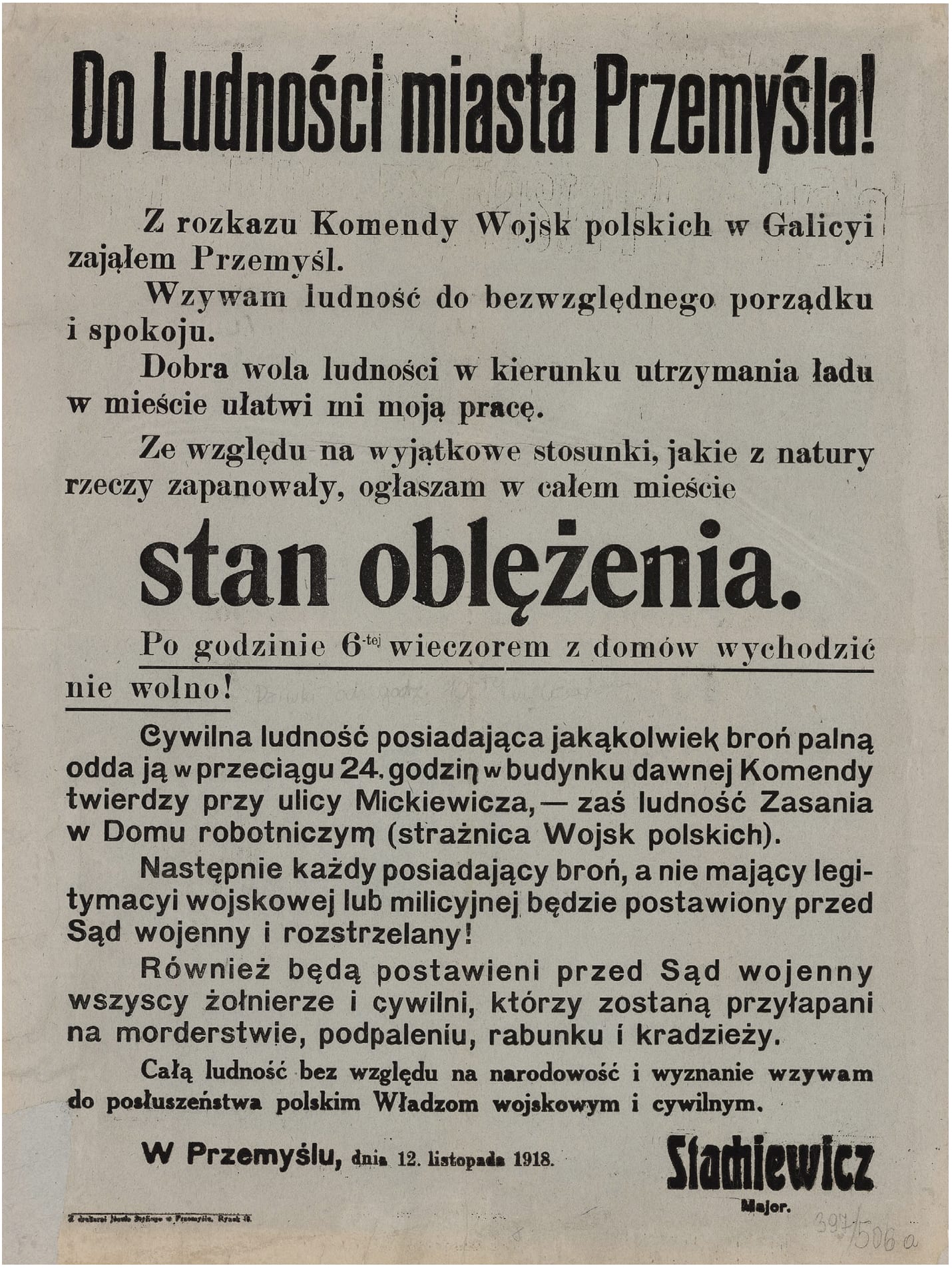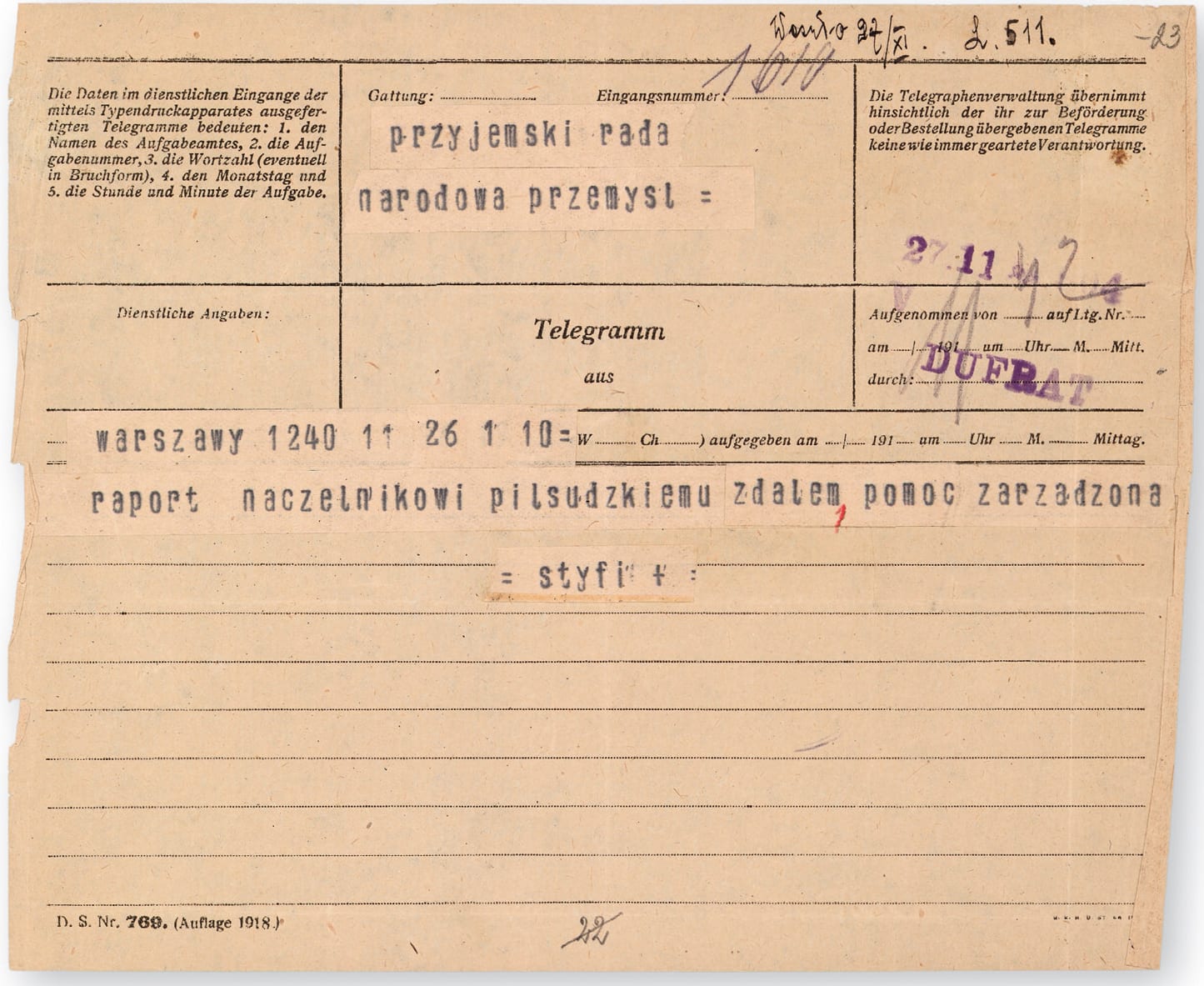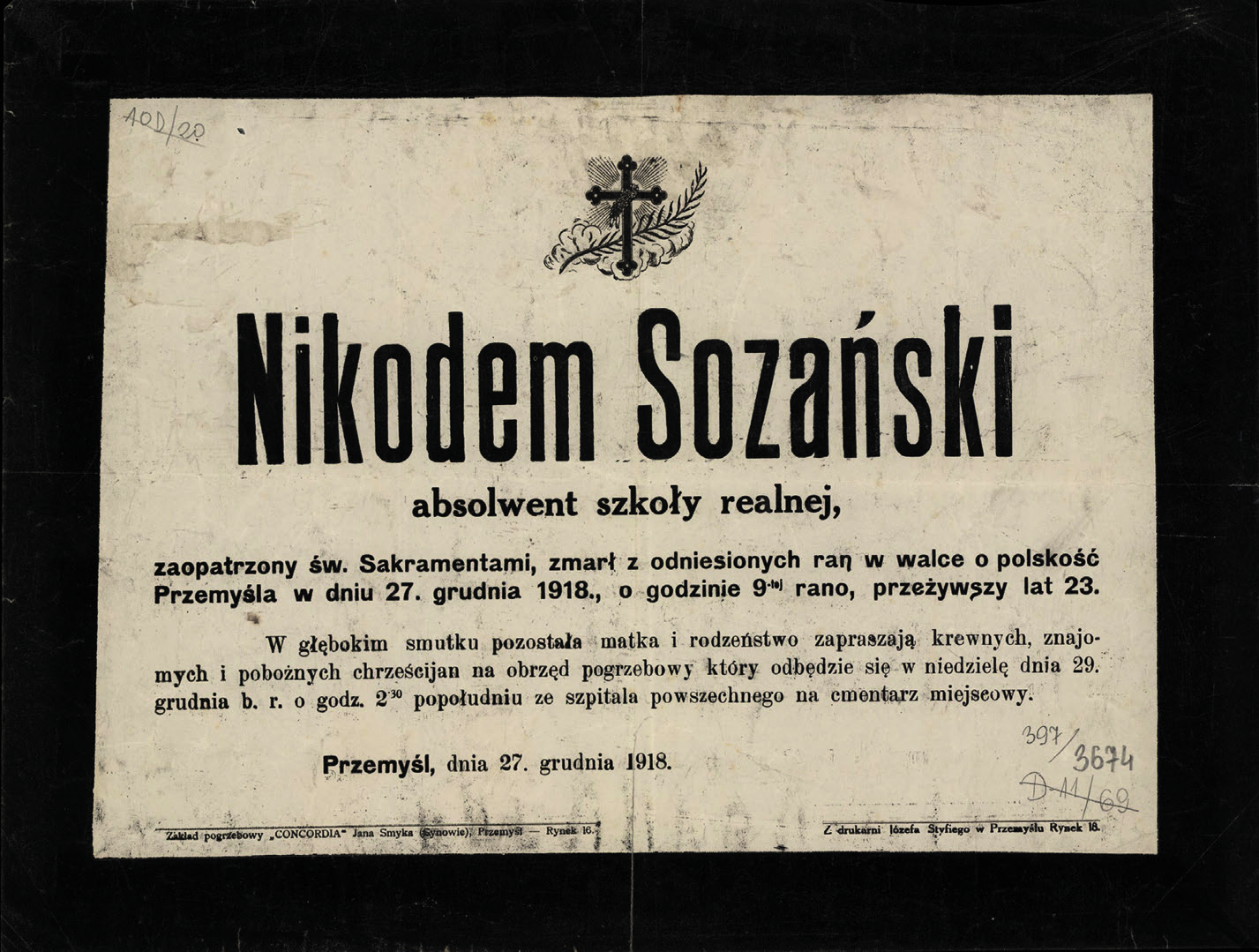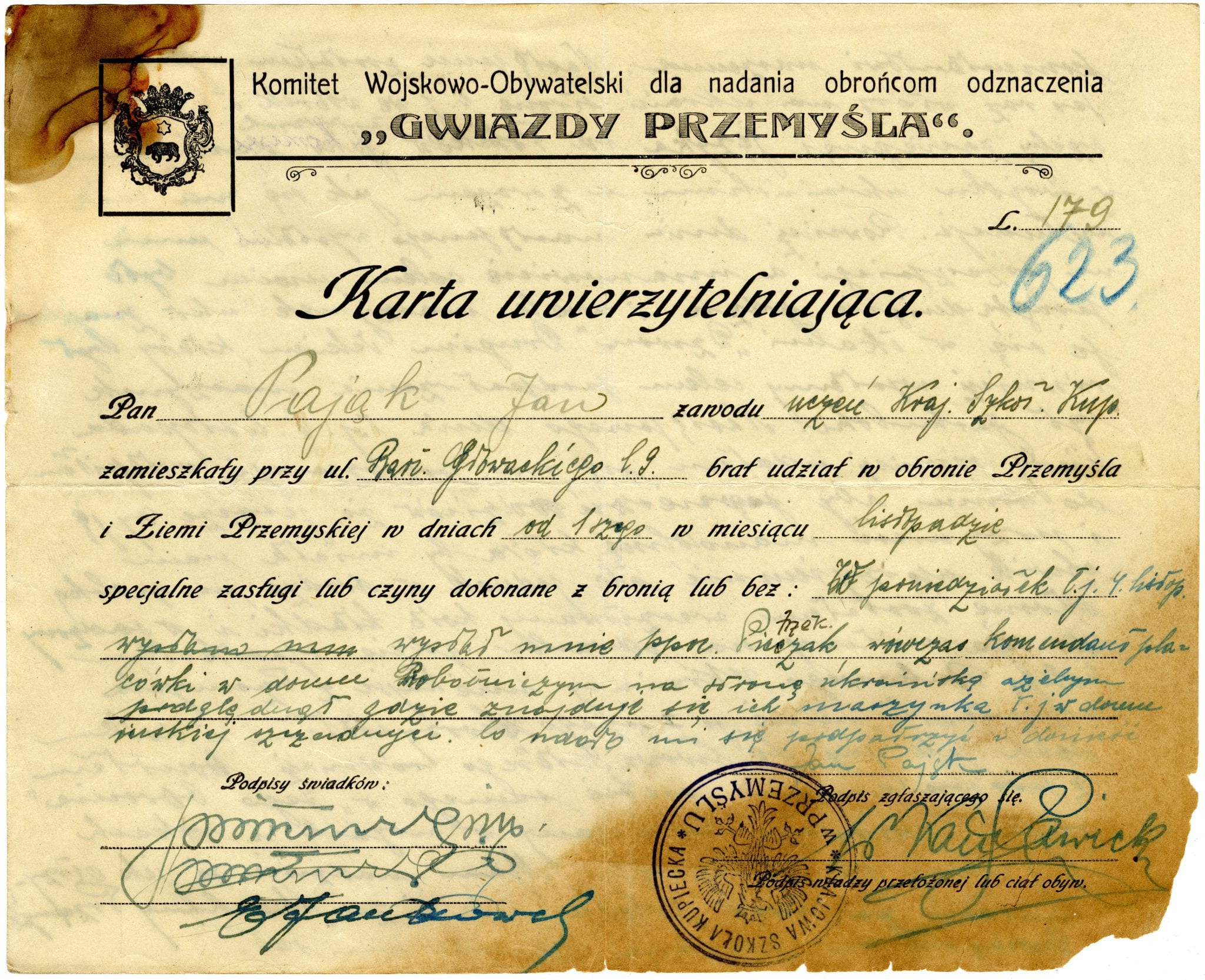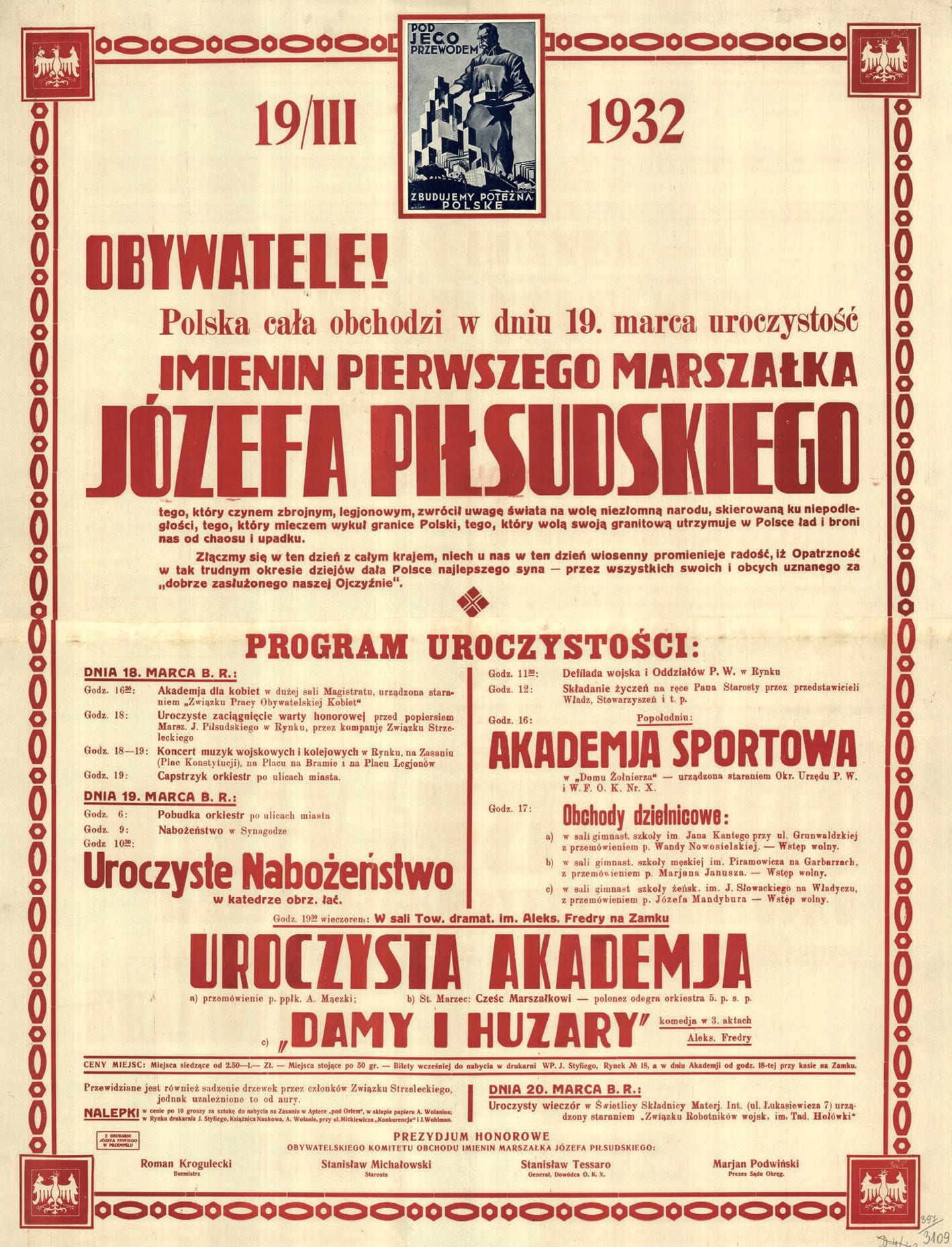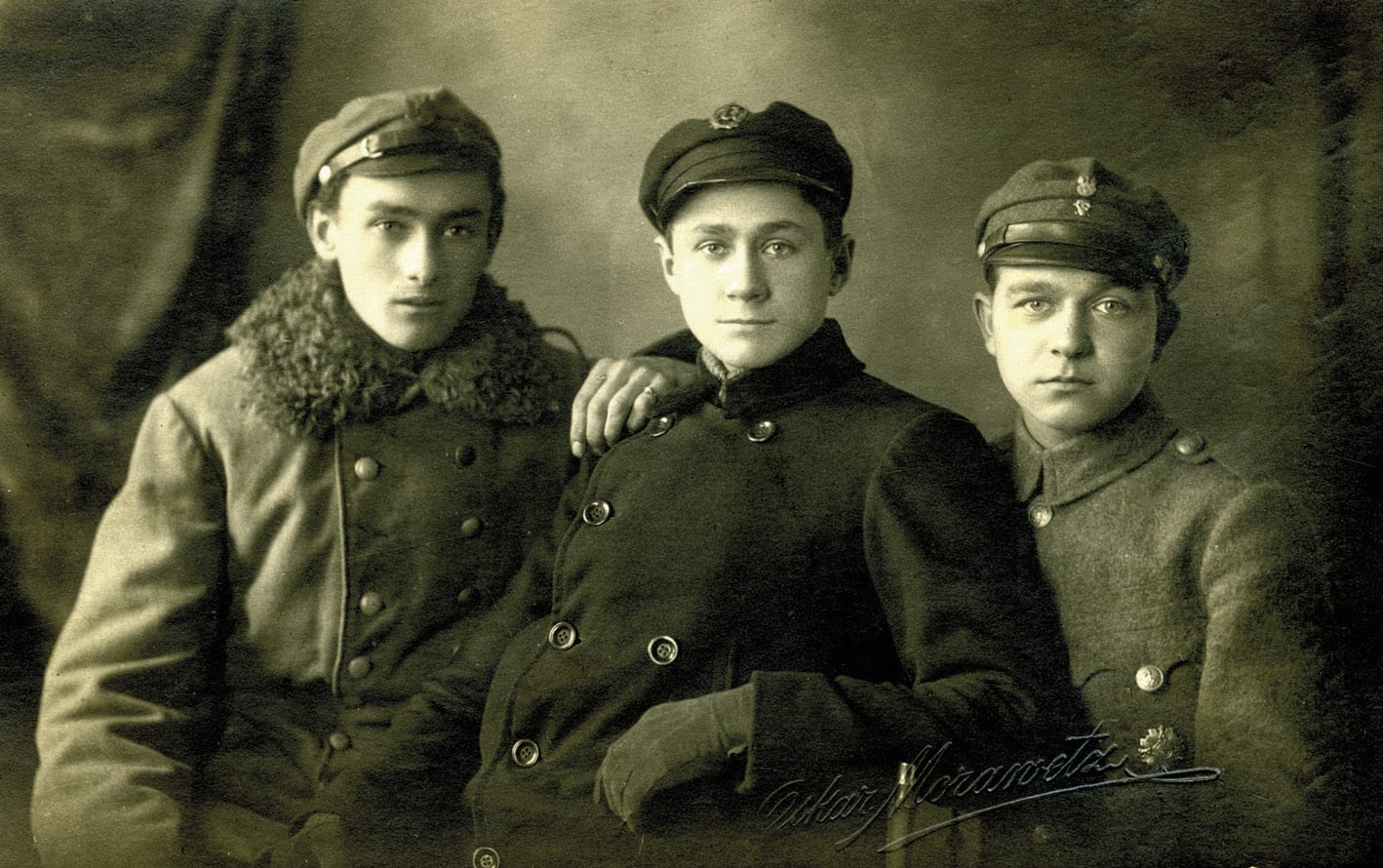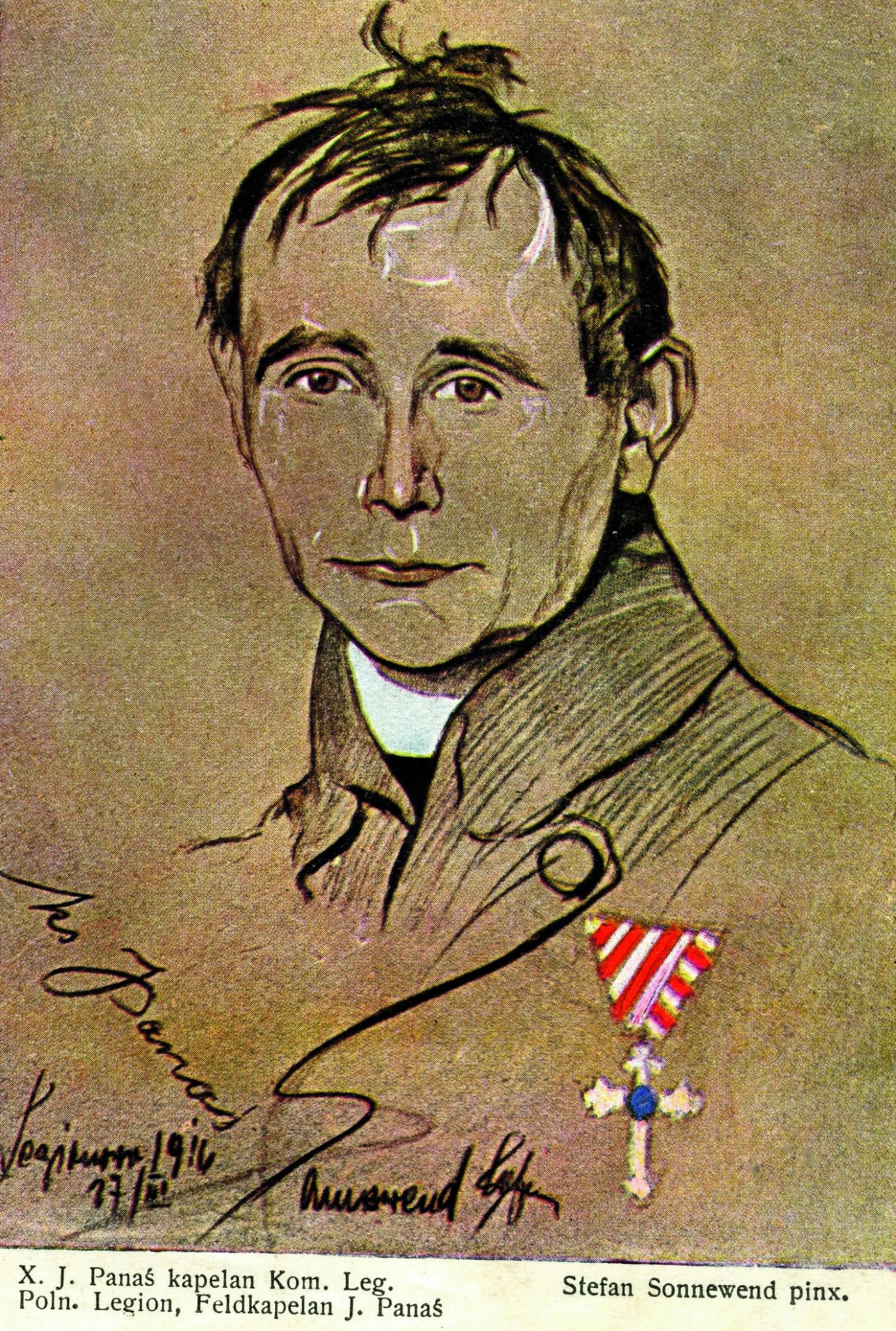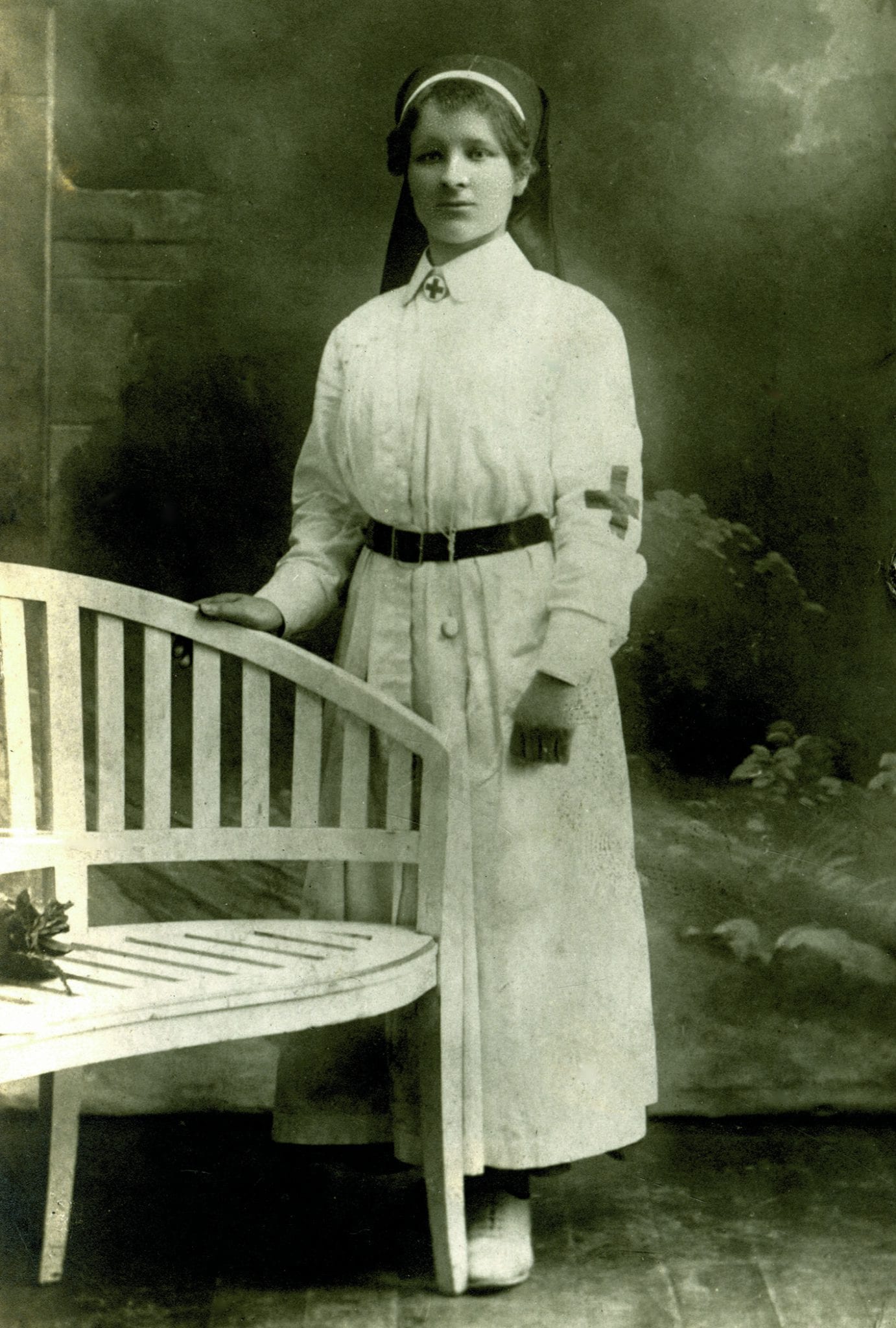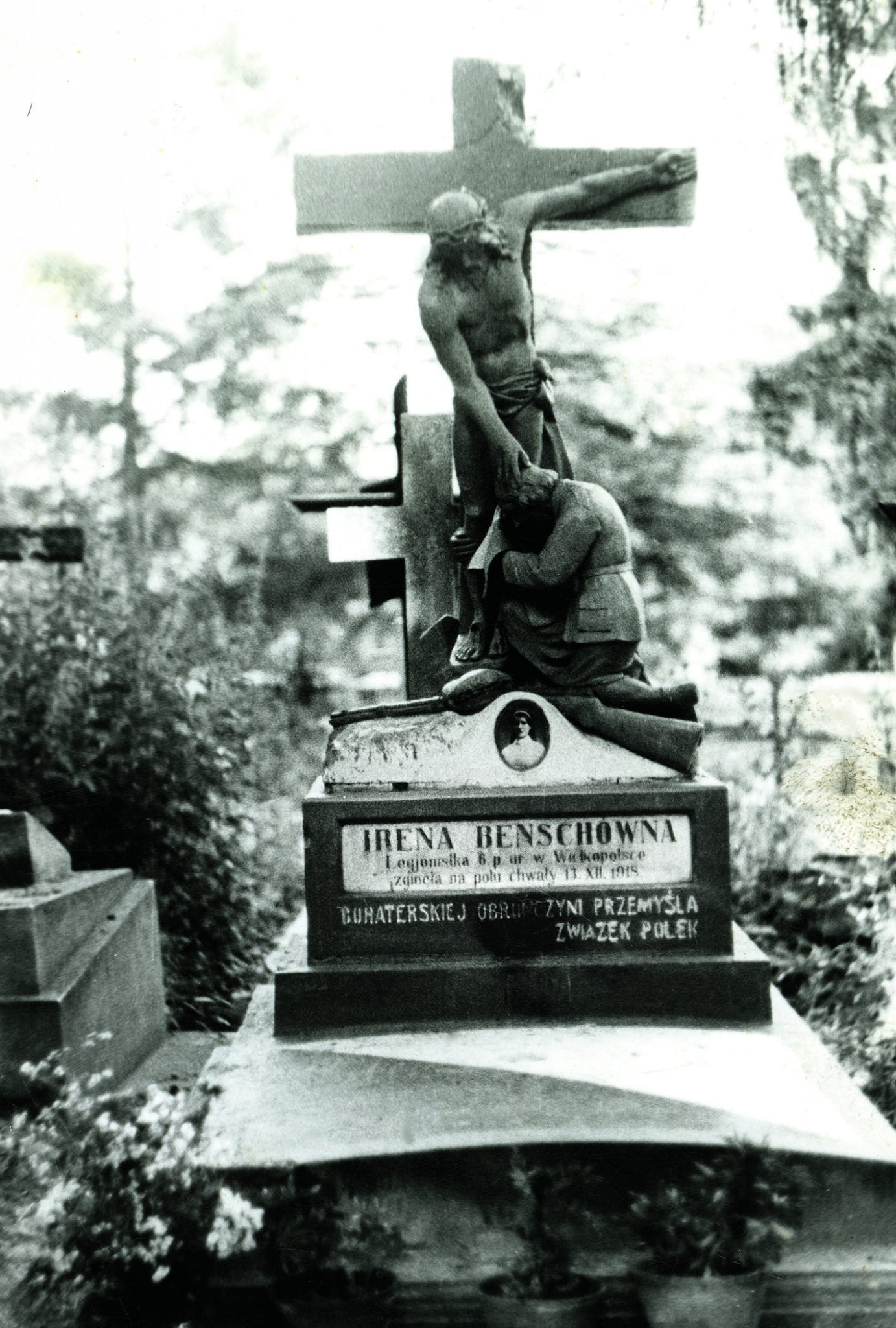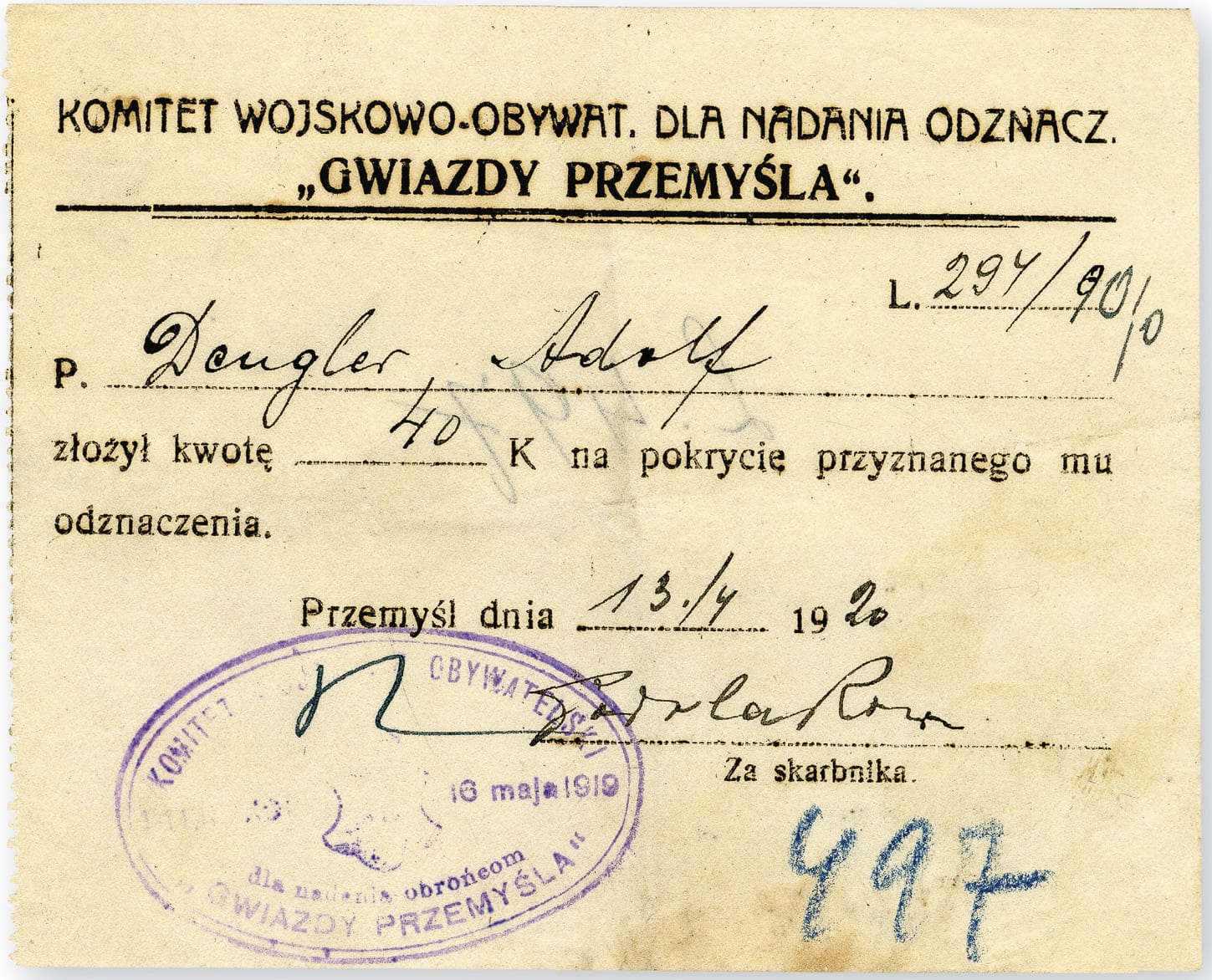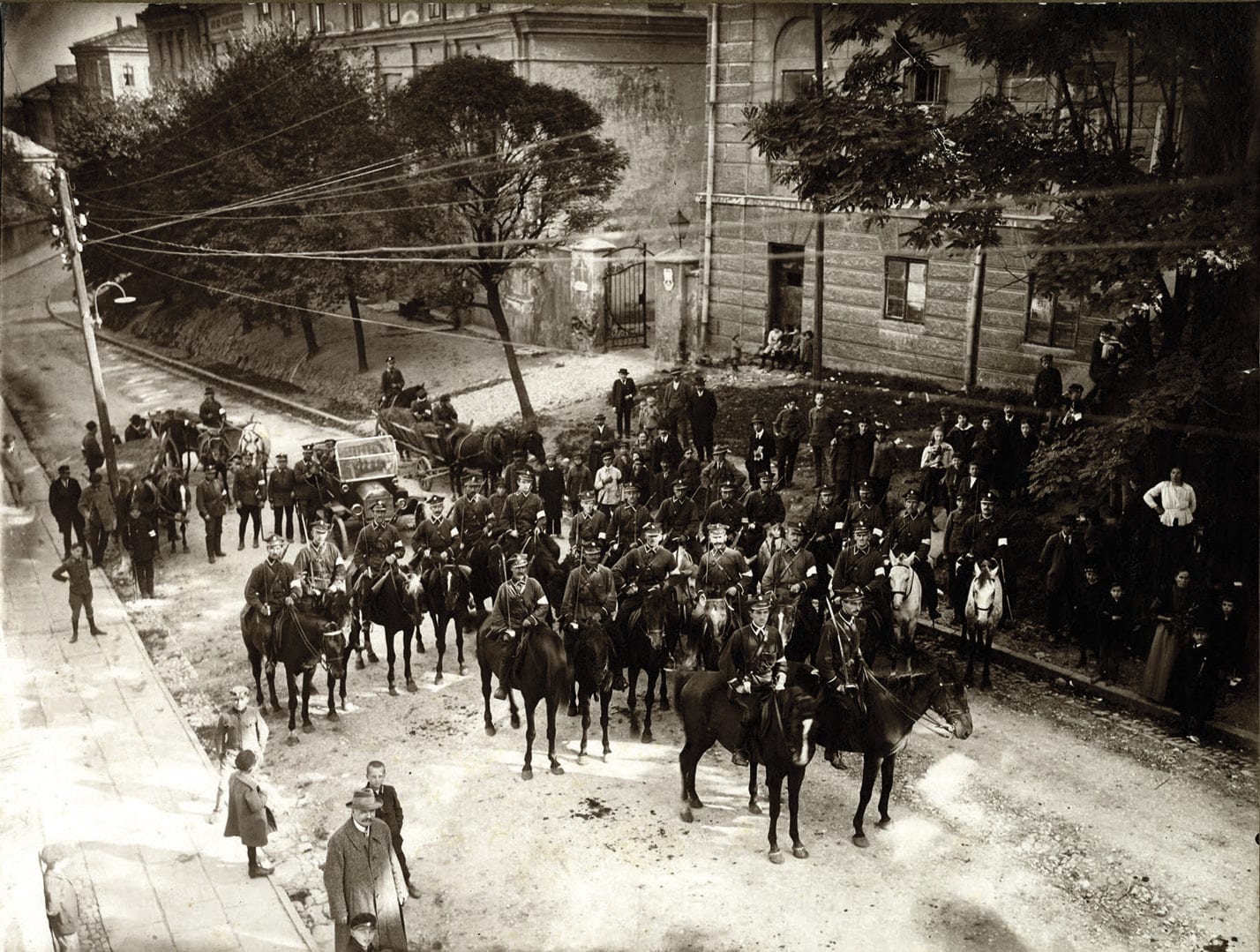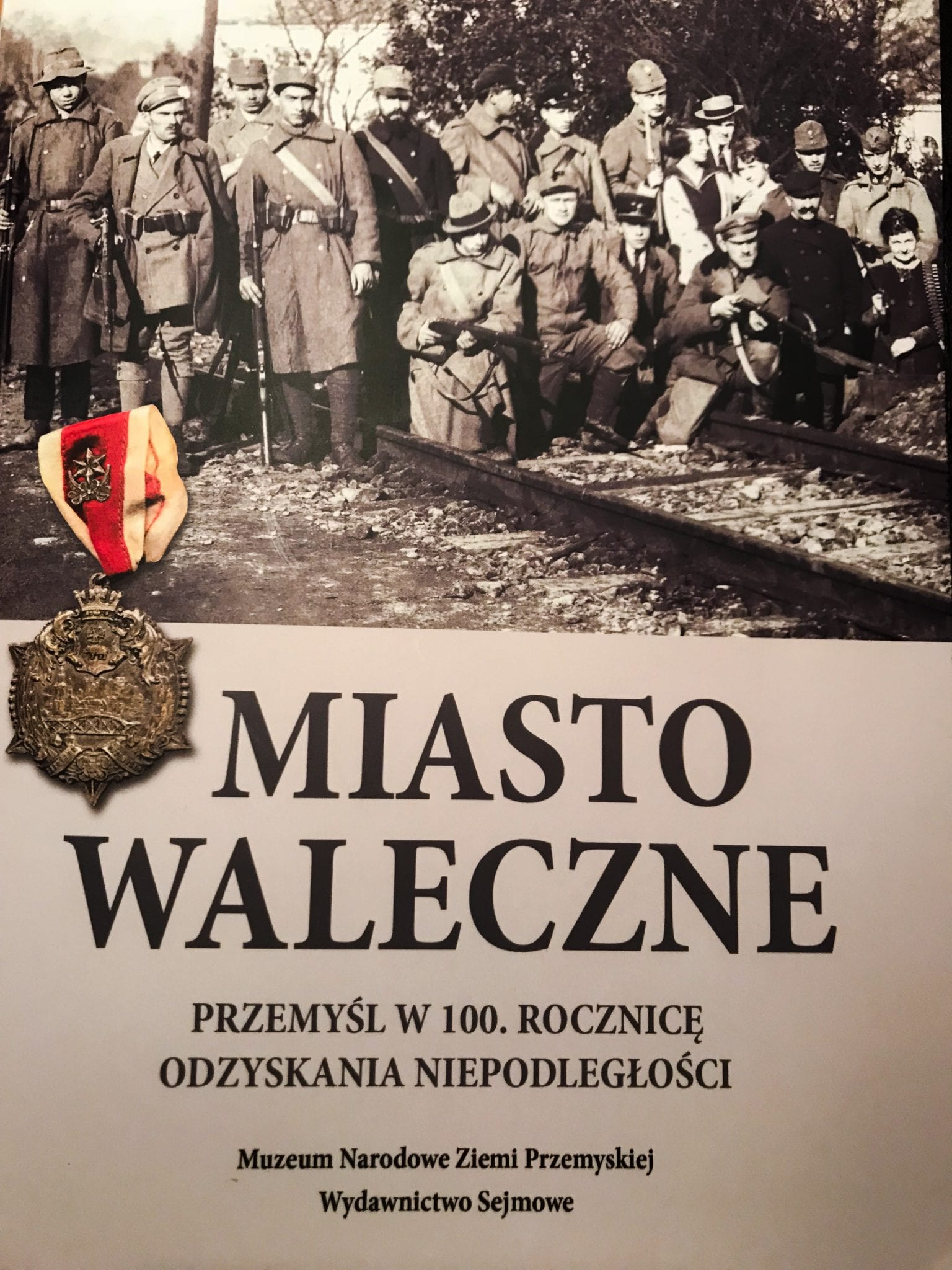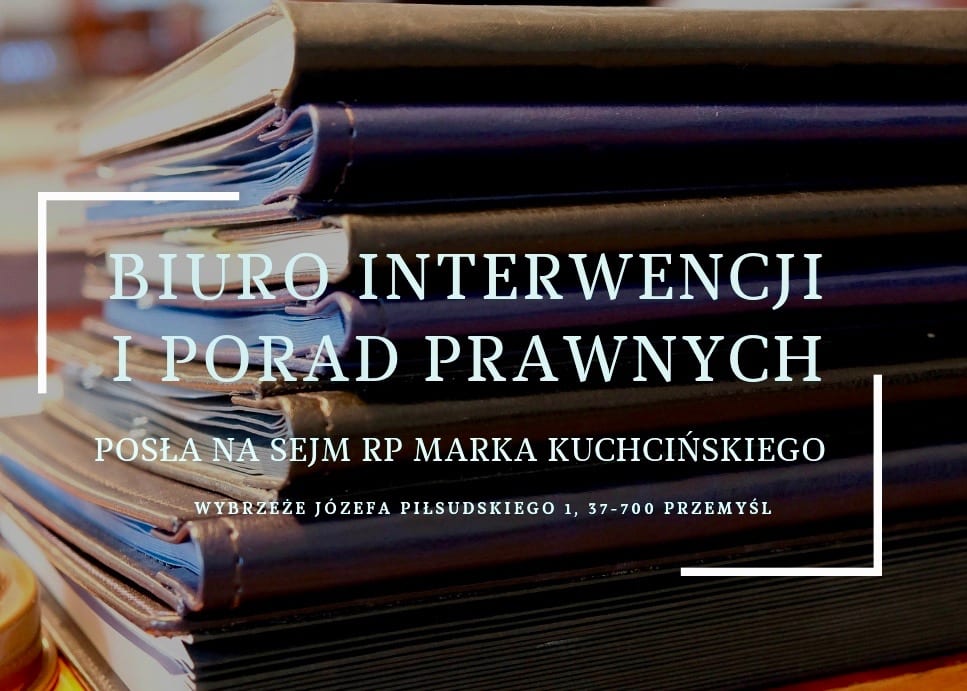The National Museum of the Przemysl Region, in cooperation with the Seym Publishing House, as part of the celebration of the 100th anniversary of regaining independence, has prepared a publication dedicated to Przemysl: "City of Valor." Among the authors are Marek Kuchcinski and Ryszard Terlecki, who outline the events the city has had to face over the centuries. Below is an introduction by the Speaker of the Sejm:
Przemyśl - my city. Reflections on Przemysl on the 100th anniversary of regaining independence
Marek Kuchciński
As we commemorate the 100th anniversary of Poland's rebirth and the contribution of the people of the Przemysl Region to this great act of independence, it is impossible to avoid a few reflections and comparisons between the period before and after World War I. The Great War caused enormous geopolitical changes. The formation of many nation-states in our part of Europe brought a new quality to socio-political life. This raises the question of how these changes affected the development of the Przemysl region and Przemysl itself, what were their causes and effects, what impact they had on the generational processes of transformation, what depended on nations and what was the work of individuals, and who is worth remembering. These questions can refer not only to history, but also to people, the formation of nations, sustainable development, cultural heritage, in other words, to everything we are concerned with in the spirit of the anniversary.
The Second Republic, like few countries in Europe, was subject to insults (the famous "bastard child of the Versailles Treaty" - Molotov, "economic impossibility" - Keynes, "defector of history" - Lloyd George, for the record, the current insulting of Poles by foreigners is nothing new) and policies serving to annihilate our Motherland. Shaping its independent existence under very difficult external and internal conditions, the Second Republic nevertheless achieved great success. After the times of partition, economic and social backwardness, the state policy brought changes for the better to the citizens. It unloaded rural overpopulation and reduced urban unemployment. Parliamentary democracy, women's suffrage, free education and labor legislation that was very favorable to workers were introduced. Social advancement was made possible for broad social strata, resulting in the education of hundreds of thousands of high-class professionals and millions of citizens who are aware of their rights and duties.
Identification with one's own state, along with a sense of strength from the national community, became factors that determined our national survival in the clash with the greatest demons of the 20th century - national and internationalist socialism.
***
Rev. Benedict Chmielowski, author of the first Polish general encyclopedia New Athens, wrote that Przemyśl already existed in 758 (1260 years ago!): "PRZEMYSŁAW I, or LESZEK I, from the Gilded Condition Faber Fortunae of the Poles, gilded stumps of Hungarians and Moravians not so much as frightened and repelled Poland. He lived about the Year 760, and he founded Przemyśl under his name." This ruler is also noted by Ignacy Krasicki in his two-volume "Zbiór potrzebnieyszych wiadomości." The city or town, as Przemyśl was referred to in the time of the chronicler Nestor, was the seat of the Lędzians - Lechites, which was occupied by the Ruthenian prince Vladimir in 881, and which in turn was recaptured by Bolesław Chrobry, probably during his victorious expedition to Kiev. From the beginning of the 14th century, the Przemyśl castle, built to defend the southeastern borders of Poland, was one of dozens of castles erected by Casimir the Great.
Przemyśl was the seat of the starosty and diocese. In the cathedral, in today's Drohojowski Chapel, sejmiki of the nobility were held (such were the customs), during which the knights made important decisions for local affairs. Noteworthy among the starosts were Piotr Kmita and Stanislaw August Poniatowski, later king of Poland.
The city was the capital of the Przemysl Land, where, in Sądowa Višnia, the general sejmiks of the Ruthenian Voivodeship of the First Republic took place. The Przemysl Land of the time was vast, stretching from Stryj to Swilcza behind Rzeszow and from the Slony Mountains to Tarnogród. It included the districts of Przemysl, Yaroslavl, Lezajsk, Łańcut, Rzeszów, Mosciski, Przeworsk, Samborsk, Drohobycz, Tyczynski and Stryj. Unfortunately, after World War II, as a result of the establishment of borders between the Polish People's Republic and the USSR, the historic Przemysl Land was divided. Today, one part is in Poland, the other in Ukraine.
Przemyśl remembers its splendor from the Austro-Hungarian era. At that time it became one of the largest fortresses with a garrison of more than a hundred thousand soldiers of almost all nationalities of the multi-ethnic empire.
***
Many prominent and well-known figures were associated with Przemyśl and the Przemysl Land, such as writer Stanislaw Orzechowski, canon (later bishop of Warmia) Ignacy Krasicki - parish priest of the Przemyśl Cathedral and author of Monachomachia, Marshal of the Sejm Andrzej Maksymilian Fredro - baroque writer, known as the Polish Tacitus, founder of the monastery in Kalwaria Pacławska and his distant cousin - poet Aleksander Fredro of Rudki, Mikołaj Sęp-Szarzyński - one of the most outstanding Polish poets. Among the recognized persons are also clergymen: St. Joseph Pelczar (bishop of Przemyśl at the turn of the 19th and 20th centuries, founder of the Congregation of the Sisters of the Sacred Heart and the Przemyśl Archdiocesan Museum), Blessed Fr. Jan Balicki, Cardinal Adam Stefan Sapieha of Krasiczyn, and Archbishop Ignacy Tokarczuk - our "spokesman for the nation fighting for its sovereignty and an unbroken bishop", whom by the decision of the Sejm we remember in a special way this year, on the 100th anniversary of his birth. This circle of notable figures is widened by: Cardinal's nephew Leon Sapieha of Krasiczyn - landowner, MP for the Sejm of the Second Polish Republic, soldier in the Polish-Bolshevik war and the Home Army, buried in the cemetery in Łętownia near Przemyśl; Jan Gwalbert Pawlikowski of Medyka - creator of ecology, first publisher of Słowacki's "The King's Ghost," Jan Szczepanik - brilliant inventor from Rudniki near Mościska; Henryk Jordan - physician, creator of gardens for children and young people, named after him. In addition, born in Drohobych Socialist, legionary and lawyer Herman Lieberman, initiator of the construction of the Workers' House; the remarkable Tarnawski family: Apolinary - a doctor and creator of the spa in Kosovo in Pokucie (Hutsul), Leonard - January Uprising insurgent, lawyer, member of the Legislative Sejm, co-founder of the Society of Friends of Science and the Dramatic Society "Fredreum", his son Wladyslaw - an outstanding Englishman, translator of Shakespeare, and at the same time creator of the first think tank - the Committee of Eastern Territories, residing at No. 4 Grodzka Street (a beautiful tenement house with a bay window and a double coat of arms of Lithuania and the Crown); Karol Duldig - one of the greatest Australian artists, sculptor and founder of the Australian Academy of Arts; Mojżesz Schorr - senator of the Second Republic, historian and orientalist; Zbigniew Brzeziński - American political scientist and diplomat of Polish origin, advisor to US presidents; Andrzej Gawroński - linguist and polyglot (he knew 140 languages!), defender of Lvov in 1918; Jerzy Grotowski - theater reformer, also lived on Grodzka Street; Przemyslaw Bystrzycki - writer, silent-combatant; Ryszard Siwiec - Home Army soldier, heroic martyr for the freedom of Czechoslovakia in 1968.
***
In the past period, it was not only Przemyśl that gathered elites, and not only it was a melting pot for the exchange of ideas. Generational heritage and national identity were built in many other cities and towns in the Przemysl region, as well as in the surrounding villages, which were then inhabited by the vast majority of Poles.
Rudki - a small but important town until the outbreak of World War II remained in the possession of the Fredro family. Alexander Fredro is also buried there.
Drohobych, known as the city of 5 refineries, is associated not only with Bruno Schulz and Boryslav, where Jan Zeh and Ignacy Lukasiewicz lit the first kerosene lamp in the mid-19th century, but also with leading Viennese politicians, such as Prime Minister Kazimierz Badeni and MP Eustachy Sanguszko, also with artists Artur Grottger, Maurice and Leopold Gottlieb, and military men such as General Stanislaw Maczek and the legendary white courier Tadeusz Chciuk-Celt. Ivan Franko, one of the most prominent representatives of Ukrainian literature, was also associated with Drohobych.
Right next to Drohobych there is Truskawiec - one of the most famous and fastest developing health resorts of the 2nd Republic of Poland (286 newly opened hotels and guesthouses in the 20-year period!). It is here that Kazimierz Pelczar, the founder of the first Polish oncology center, was born.
In Medyka, the unusual nest of the unusual Pawlikowski family - which few people know about - there was an underground printing plant operating in the 19th century, after the disclosure of which Galicia had to leave the family of today's Czech conservative, political scientist Alexander Tomsky.
In turn, in the arboretum in Bolestraszyce near Przemyśl (founded in the 1970s by Prof. Jerzy Piórecki), there still stands the manor house of Piotr Michałowski, a prominent painter who managed the supply of armaments to the insurgents during the November Uprising.
Going back to the 17th century, it is worth remembering that the daughter of the starosta of Samborsk, George Mniszch, became the wife of Tsar Dmitri. These were the only two years in Russian history when Poles ruled the Kremlin (after an earlier victory at the Battle of Klushino). Tsar Vasily Shuisky and his brothers paid homage to King Sigismund III in Warsaw, as recalled by a plaque on Sigismund's column. No one later repeated this feat.
Finally, it is a City and a Land where different nations lived side by side for centuries, different Churches were active. Sometimes we can meet the opinion about our sites that they are a melting pot of nations. This is a misleading notion, more fitting for the United States as a melting pot of different ethnic groups. In the Przemysl Land and the former Eastern Borderlands, nations (nations) functioned both independently and interdependently, but in a sovereign, though often competitive, manner. Rather, it can be assumed that our part of Europe was more of a "link of history," where Eastern and Western influences intermingled. After all, our status and character were shaped by the golden ages of the First Republic, which pursued a policy "between the seas" with impressive vigor. And the characteristic that has characterized us since those times - tolerance growing out of the libertarian and republican traditions - can best ensure the coexistence of different cultures in one territory. No fascism, no communism, no ethnic feuds.
***
"It's to keep him warm". - These simple words spoken by Father Jan Balicki, now a blessed of the Catholic Church, to a seminarian who asked why he was giving his sweater to a poor person, aptly characterize many similar attitudes. Individuals like Father Jan Balicki have shaped Przemysl and Przemyslans for centuries. Blessed Fr. Jan Balicki was born on January 25, 1869, in Staromiest near Rzeszow. If we tried to look at Przemyśl through the eyes of young Jan, we would see a militarized city. Although thriving economically, but with a ragged soul - a soul hiding in the walls of old tenements, churches, orthodox churches and synagogues. This soul was also taken care of by St. Bishop Jozef Sebastian Pelczar.
***
The Austrians appreciated the military significance of Przemysl's location already after the expedition of the troops of the Duchy of Warsaw under Prince Poniatowski to Galicia in 1809. Ten years later, the city began to be fortified.
This was nothing new in the history of the city. According to sources, fortified walls had protected Przemyśl since at least the 14th century. The Przemysl Gate, in the valleys of the San and Wiar rivers, was for centuries a natural passage from the Sandomierz Basin to the Przemysl Foothills, leading south through the trans-European Carpathian chain. It was a trade route connecting Eastern and Western Europe. In less peaceful times, large armies marched along this route.
Three years before the November Uprising, an Austrian permanent garrison was stationed in Przemyśl, and in the second half of the 19th century the Przemyśl "fortified camp" was transformed into a strategic and operational base for the eastern border of Austria-Hungary. The wreath of Przemysl's hills consisted of several dozen main forts and dozens of auxiliary forts.
At the beginning of the 20th century, this implemented plan turned into a powerfully fortified Dniester-San line. At the beginning of the Great War, Przemyśl was designated as the defense center of this line.
***
Throughout the 19th century, and especially the last quarter of the century, the city's expansion continued. Its population has exceeded 50,000 several times. It will reach a similar population in the 1930s, to exceed 68,000 in 1938, the same as today.
Hungarians to this day remember the service of their countrymen and the battles for Przemyśl. In Budapest, they commemorated the fallen with a magnificent monument bearing the name of our city, erected in the very center of the capital (not far from the monument to General Jozef Bem, Hungary's hero from the Spring of Nations). The grandparents of Jozef Antall, the former prime minister, and Laszlá Kövér, the current head of Hungary's National Assembly, served in the fortress during the First War. The new monuments to the Hungarian hussar and lancer Beliniak unveiled in 2016 in Przemysl's Dominikansky Square are highly symbolic in their significance. Efforts are also underway to add to this group the famous Czech telegrapher Vladimír Sýkora, whose diaries from that time are preserved in the Czech archives. And if we were to include a fellow Slovak, another symbol would be created - a common memorial for the entire Visegrad Group. And this is the historical policy our countries should pursue. The authorities of Przemyśl took care of the creation of this symbol in advance, as it were, by naming one of Przemyśl's squares the Visegrad Square, the official announcement of which took place during the meeting of the presidents of the V4 parliaments in 2017.
War has not infrequently nullified age-old alliances. Polish-Hungarian memory today, however, recalls other facts that in virtually every century confirm the close ties between the two nations. Reaching back, for example, to the 19th century, it is worth recalling Generals Jozef Bem and Jozef Wysocki, as well as the more than one and a half thousand Polish volunteers who participated in the Hungarian Spring of Nations - many of them (several hundred, and among them junior high school students!) who enlisted in the Polish Legion came from the Przemysl region, including one immortalized in the November Night Wyspianski the November and January insurgent Colonel Leon Chekhovsky (he has as many as two commemorations in Yaroslavl: a beautiful tombstone monument in the Old Cemetery and a wooden Szekler Pillar - Kopijnik, near the former synagogue). They were mentioned by prominent Hungarian historian and diplomat István Kovács in a recently published Biographical dictionary of Polish participants in the Spring of Nations in Hungary. Among the representatives of subsequent generations, let us note first of all - already from the Hungarian side - Géza Gyoni, a sapper from the Przemyśl fortress, an outstanding poet of his time and his nation, a "prisoner of poetry" who "Counted his days/ in the country of the Lechites/ faithfully waiting/ for merrier dawns", and Ferenc Molnar, the author of Boys from the Bronze Square, and in the army a war correspondent from Przemyśl, among other places. It is also worth recalling the service of more than a hundred Hungarians in the Second Brigade of the Polish Legions breaking through the Carpathians into Poland during the First War. Even more vivid is the memory of Hungarian aid (in the form of millions of rounds of ammunition) directed to the Polish army fighting the Bolsheviks in 1920, without which the fate of that war might have been very different. This aid came at a dramatic time for the Hungarians, when by the provisions of the treaty signed at the Trianon Palace in Versailles, they were deprived of 2/3 of their territory and 1/3 of the nation was left outside their own state. And it should be remembered that the planned Hungarian aid was much larger, and included arms and military troops. However, it was stopped by other countries, reluctant to the resurgent Poland and sympathetic to the Bolshevik Revolution.
The symbol of Polish-Hungarian cooperation in the next generation (already during World War II) was the cooperation of Jozef Antall and Henryk Slawik - heroes of three nations (Polish, Hungarian and Jewish), who during the occupation saved 30,000(!) Polish citizens, including 5,000 Jews. Henryk Slawik was doomed to oblivion in Poland practically until the second decade of the current century, when - thanks mainly to the efforts of Mr. and Mrs. Krystyna and Mr. Grzegorz Lubczyk - publications appeared on his subject and we unveiled twin monuments (in Warsaw in 2016 and a year later in Budapest) to both heroes in the form of the Antall and Slawik Bench.
We also remember the June and October 1956 uprisings in both countries, which were great symbols of solidarity. At that time, from Przemyśl to Szczecin, blood was donated for the insurgents. The latest commemoration of another symbolic figure for Polish-Hungarian cooperation is the Polish Institute named after Waclaw Felczak, the famous courier of the Polish Government in Exile, which was established in 2018 (in Hungary, the equivalent of the Institute is the W. Felczak Foundation).
***
When writing about the phenomenon of Przemyśl, it is worth mentioning some of the institutions that enriched the social and cultural life of its residents, especially in the 19th century. It was then, in 1869, that Poland's oldest Dramatic Society named after Aleksander Fredro "Fredreum" was founded, an uninterrupted amateur theater still based in the same place, the Przemyśl Castle - a phenomenon on a European scale.
The beginning of the Music Society was in November 1865. The first presidents of the Board were Alexander Dworski and Walery Waygart. And one of the important representatives of the world of music from Przemyśl was Artur Malawski (born in 1904, on Vladycze Street). Today the Podkarpacka Philharmonic and the State Music School Complex in Przemyśl bear his name.
The intellectual activity of Przemyśl residents also found expression in the Society of the Friends of Science, established in February 1909. The Society, still active today and counted among the oldest institutions of its kind in Poland, was established on the initiative of, among others, the brothers Kazimierz Maria and Tadeusz Osinski, who were also among the originators of the establishment of the National Museum of the Przemysl Region, and whose family house stands on Kmita Street.
***
Behind us is the history of Przemyśl crushed by the military burden of the Austro-Hungarian army, economically richer, but without a bright future. In 1918, when Poland regained its independence, Przemysl was also - and among the first to do so - put up a fight. The Rev. Capt. Jozef Panaś fueled the fighting spirit. This time against the Ukrainians. The people of Przemyśl fought from the beginning of November 1918, for bridges over the San River, for neighborhoods, and carried out counterattacks from Zasan to the right side of the city. On November 11, Przemyśl was free! But Poles continued to fight in Nizankowice and other localities. Representatives of all generations took part in the fight, including the Eaglets - students of the Przemyśl grammar schools (those who died were buried in the large symbolic grave of the Eaglets in the main cemetery). However, this would not have been possible if the foundation of values for the emerging national and supranational community had not been built over the generations. Because Przemyśl, like many similar cities of the Republic, was a City of Poles of various religions AND nationalities, and the identity of the entire Przemysl Land was built not only by Poles, but also by Jews, Ruthenians, Ukrainians, Hungarians, Austrians, Czechs, Germans, Armenians. We can see this diversity and the layering of the achievements of generations and cultures, for example, in the architecture of the Przemyśl Cathedral. In its present form, it bears traces of: Gothic, Renaissance, Baroque, Rococo and later styles. It stands on the foundations of earlier temples: Romanesque and perhaps also early Romanesque from the time of Great Moravia and the Bishopric of Prague. Przemyśl is still today the seat of the archdiocese of the Roman Catholic Church and the Greek Catholic Church.
***
From the dramatic times of World War II and the following decades of Przemyśl's existence, we can recall almost symbolic figures, confirming the personalist thesis that man is a value, and the proof of this is the love of freedom. This can be exemplified by the attitude of Stefania Podgórska, a twenty-year-old resident of Tatarska Street (now decorated with the medal "Righteous among the nations of the world"), who, during the German occupation, risking her life in her family home, hid (in a hiding place of 8 sq. m/sq. ft.) 13 przemyślans of Jewish nationality.
A number of military officers are also worth recalling, among them the ancestors of the current Minister of Justice Zbigniew Ziobra. His great-grandfather, Colonel Władysław Kornicki, was in the 1920s commander of the Technical Forces and the X Corps District Command in Przemyśl, as well as a lecturer at the Lviv Polytechnic University (he was murdered by the Soviets, his name appears on the so-called Ukrainian Katyn list). His grandfather Ryszard Kornicki lived on Waygarta Street, and during the occupation headed the counterintelligence of the Home Army in the Przemyśl district, then became head of the WIN Inspectorate.
The number of families (often of many generations) involved in the act of independence was very large in the Przemysl region. Let's recall a few more members of the underground. The first is the commander of the Rzeszow District of the WIN, Major Wladyslaw Koba, whose funeral was held only in 2016 at the Przemysl cemetery in Zasan. But first and foremost, we should mention the amazing, heroic Second Lieutenant Alicja Wnorowska, from the Intelligence Brigades of the AK (the name says it all!) and later WIN, who lived on Matejki Street. She was arrested when she was 8 months pregnant and gave birth to her son Stanislaw, later a Przemyśl councilman in the 1990s, on death row. It was not until 2018 that the Sejm passed a law ensuring children born in communist prisons (there were 40 of them) the right to compensation. It is also symbolic that this law was "piloted" in the Sejm by Przemysl MP Andrzej Matusiewicz, an experienced lawyer and defense attorney in communist-era political trials.
We will always remember Ms. Alicia from the antique shop where she worked in the 17's, in the arcades of the Przemyśl market square. We used to come there after school, looking for books that would help in our youthful search for heroes and their adventures. And sometimes, "completely by chance", on the long, age-old counter of the bookstore, but close at hand, as it were, would appear an old novel by Ossendowski(!), Paweł Jasienica, a report by Melchior Wańkowicz or a well-preserved "some kind" of pre-war biography. At the time it seemed to us that these were mere coincidences, but fascinating, because the shelves of the antiquarian bookstore appeared like a wonderland. Today we know that behind the kindness of Mrs. Alicia, a neighbor on the street, there was a natural impulse to pass on to the next generation signs, symbols and sources important to every young person.
Another example is the Mech family from Zurawica. Many of its members fought in the underground, first against the Germans and later - against the Soviets. The grave of Szymon Mech, commander of Kedyw in Zurawica, denounced in the last days of the German occupation, has not been found to this day. His daughter Czeslawa ("Niezapominajka") was a Home Army liaison officer. His son Jan was awarded the Golden Cross of Merit by Polish President Lech Kaczynski for his service in the WIN.
We remember (we still remember even though 50 years have passed!) the unbelievably dramatic act of Ryszard Siwiec, who - crossing the boundaries of heroism, and at the same time fully conscious - committed self-immolation in a stadium in Warsaw on September 8, during the state harvest festival, in front of tens of thousands of people, in protest against the invasion of Czechoslovakia by Warsaw Pact troops. To this day, this act is still remembered in Prague, and Přemyslán, to whom a monument was erected there, has become, along with Czechs Jan Palach and Jan Zajíc and Hungarians Sándor Bauer and Márton Moyses, a symbol of the fight for freedom. They all chose death because they believed that in the fight for freedom no sacrifice is too great, and only such a radical protest can shake up society in defense of solidarity and spur action. Mr. Richard's family, too, 20 years later, became involved in the changes that culminated in the great Solidarity movement.
Let's note the March student protests, which took place a few months earlier in the universities of Poland's largest cities and also had their Przemysl accent. They were formed by high school students, for whom March '68 was the spark to manifest their opposition to communist power and unjust rule. The actions and protests were organized by, among others, Damian Zegarski, a student of a mechanical technical school, the initiator of various forms of protests, including at the Adam Mickiewicz monument in the Przemysl market square; Ryszard Góral, today a legal counselor, but at the time an activist in a youth independent organization emphasizing the Polishness of Przemysl, later associated with the underground Solidarity movement, or, considered the youngest organizer of the student uprising in 1968, a then 16-year-old student of Przemysl schools (including the J. Slowacki High School No. 1), Andrzej Mazur, a former student of the city. J. Słowacki) Andrzej Mazur, one of the creators of paratheatre in Poland in the student movement in the 1970s (at the Catholic University of Lublin) and a Solidarity activist in Kuyavia, now a poet, publicist and environmentalist. The aforementioned Przemysl monument to Adam Mickiewicz was still a cult site for various independent initiatives for many years.
The already mentioned Matejki Street is also an interesting example of the concentration of meanings and symbols from the city's history recorded in the lives of its inhabitants. At its top, just below the castle, stands a lone, tall obelisk, almost dating back to the times of the last Jagiellons - a legendary symbol of the city's successful defense against Tartar invasions. Formerly, before the war, it was called "Ptasia" and was one of the oldest streets. Small (all of them are like this in the Old Town), close to the castle, it has 13 numbers, but almost under each of them some important event took place or interesting people lived. In addition to the already mentioned Alicja Wnorowska, the legendary Marian Stroński - one of the greatest Polish painters of the 20th century - lived there. The neighborhood of the castle hill resulted in many great landscapes of Przemysl created by him, views of old streets, fragments of the castle, beautiful chestnut and lime trees. On the terrace of his house, the painter recorded cubist views of Zasanie in paintings. In the tenement next door lived Kazimierz Cieszyński, the last president of the pre-war "Sokol", his neighbor was Zbigniew Kuchcinski, the first president (and co-founder) of the Przemyśl branch of the Society of Lovers of Lvov, and next door to them grew up Artur Jędruch, later provincial police chief. Also on Matejki Street today lives the chairman of the Przemyśl City Council, Bogusław Zaleszczyk - a descendant of one of Przemyśl's Eaglets. From the house on this street (in the attic) was broadcast in 1986, an independent broadcast of the underground radio "Solidarity". Matejki Street is also home to two Christian churches of various denominations. And at the very beginning of the street, in a century-old leaning house with a beautiful wooden balcony lived Mr. Emil Siara, who, with his family, during the German occupation stored several Jewish families in Ujkowice near Przemysl, saving them from death.
There are more similar streets, places and people here. The architecture of such an old city street, usually combined with the memory of generations of people living there, leaves behind a unique, sentimental charm of some mysterious, undiscovered past, which becomes more and more significant with time.
In virtually every decade of the last century, events took place in Przemyśl and the former Przemyśl area involving people in defense of freedom, including religious freedoms, independence and the fundamental rights of citizens and the right to express one's views. The street fights and barricades in defense of the Salesian Organist School in 1963, and the construction of several hundred churches, without the permission of the communist authorities, throughout the Przemyśl diocese led by Bishop Tokarczuk in 1965-93, have gone down in history. On these occasions, committees for the defense of believers were formed, such as the one that became famous for its "battles" over the church on Kmiecie Street in Przemyśl, headed by Father Pastor Adam Michalski, Stanislaw Sudol and Wit Siwc, son of Ryszard, or the one in Stalowa Wola under Father Pastor Edward Frankowski, later auxiliary bishop of the Przemyśl diocese and, after the administrative division of the Church in Poland in 1992, of Sandomierz.
Also extremely important were the activities of a small group of courageous young people from Przemyśl at the time who cooperated with the Committee for the Defense of Workers (KOR), with Stanislaw Kusinski running the organization's contact point in Przemyśl on Przemysl's Przemysl Street in the 1970s, and at the same time cooperating with the Movement for the Defense of Human and Civil Rights (ROBCIO), in which Janusz Czarski - then a student at the Catholic University of Lublin, and today director of the Cultural Center - was active, among others.
Since the 1980s, we have had times that are better known and remembered: the times of the powerful "Solidarity", and since December 1981, - the underground activities of various circles: workers, farmers, or independent culture, as well as the extremely important activities of pastoral ministries in the city and countryside, mainly in Krasiczyn with Fr. Stanislaw Bartminski.
***
It is from this perspective that we can better understand today's Przemyśl. A city of freedom-loving, courageous, well-meaning patriotic attitudes, sometimes unconventional. A city of tolerant and open-minded people. A city in whose history the entire history of Poland is scrolled. It is worth remembering that as recently as 300 years ago it was located in the southwestern part of the Polish-Lithuanian Commonwealth, and the Borderlands were placed quite elsewhere. It is no coincidence that Przemyśl necropolises (civilian and military) are distinguished by the national and cultural diversity of burials. They are monuments to history, preserving the memory of November and January insurgents, legionaries, Eaglets, Home Army, or soldiers of the effigy (unbroken). Przemyśl is a city of values and opportunities, a beautiful history and a fascinating future. A city that deserves the inclusion of the entire old town and fortress architecture complex on the UNESCO world list.
Przemyśl is part of Poland, and Poland is part of Europe. The openness of Przemyśl makes it possible for initiatives such as "Europe of the Carpathians," which brings together countries marked by a difficult history, but which have also been connected for centuries. Among these initiatives for years have been discussion meetings held in Krynica, Krasiczyn and Przemyśl for people who want to discuss the future of our part of Europe, current issues of current politics, economy, education and culture. Problems that still present various types of barriers, such as underdeveloped infrastructure or differences in the standard of living of individual countries, are discussed there.
We also discuss issues that are fundamental to our civilization, such as the choice of foundations on which the future of the community should be built. During these meetings a recipe is sought for the fashionable in Western Europe abandoning the system of fundamental Christian values and forcing a federalizing multiculture of people and customs in place of a Europe of solidary states.
"Europe of the Carpathians" is a forum for those who draw on the heritage of their ancestors and the richness of the unique space; for those who advocate sustainable development and support activities that serve the countries and peoples of all Europe; for those who have the courage to think, and to think positively about the future also in places like the Przemysl Region.
"Europe of the Carpathians" is finally a place for individuals, as well as entire families, who often under extremely difficult conditions strengthened our sense of national consciousness and elementary decency. Who, both through the axiological dimension, as well as economic development and even the satisfaction of everyday needs, built rather than demolished. And if they fought, it was in defense of basic rights, passing on from generation to generation the principles and norms of cooperative life in the diverse wealth of our Republic. Some of these individuals are recalled here.
Photos are from the collection of the National Museum of the Przemysl Region

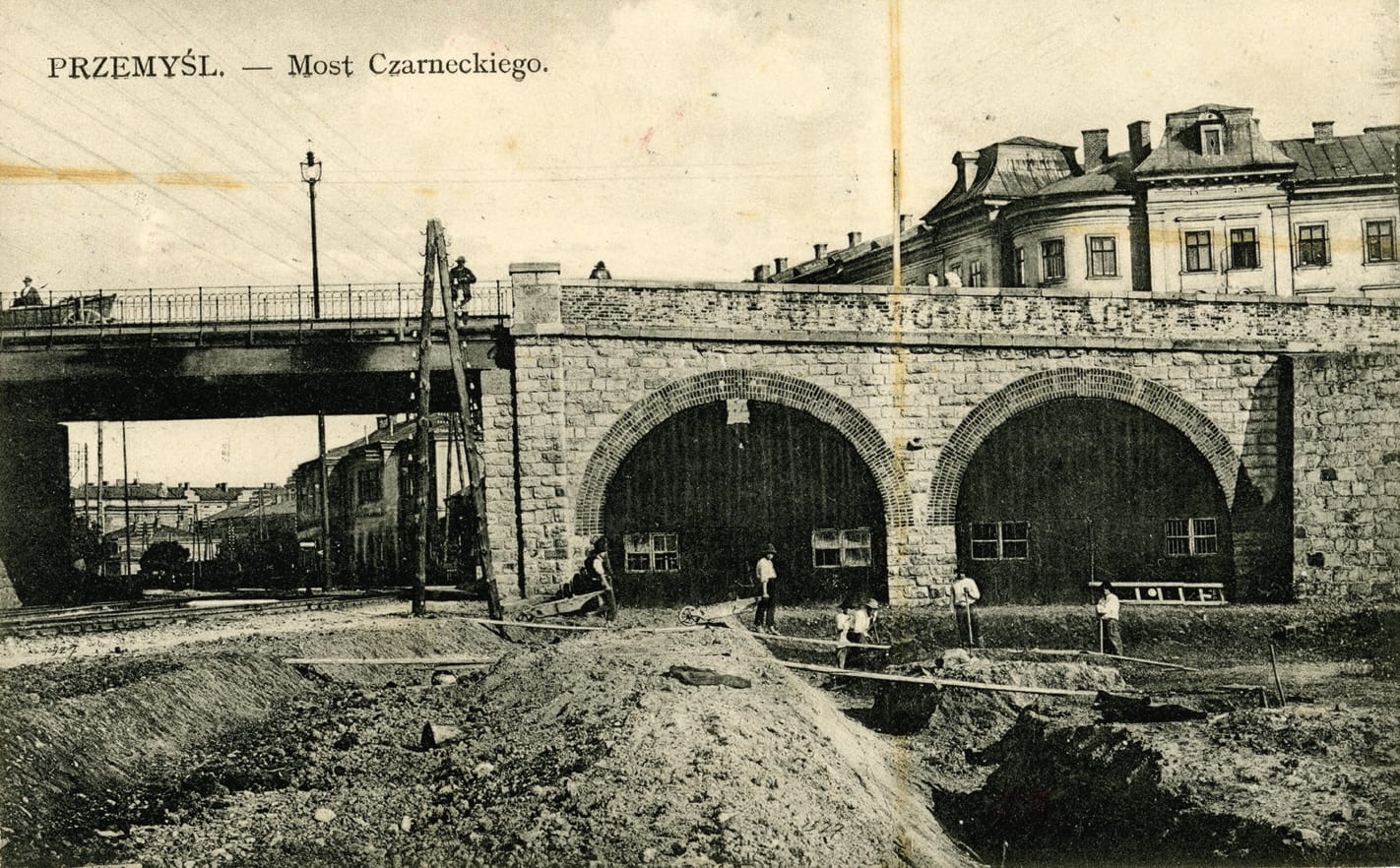 Stone Bridge, area of heavy fighting by Polish Przemysl troops on November 11, 1918.
Stone Bridge, area of heavy fighting by Polish Przemysl troops on November 11, 1918. 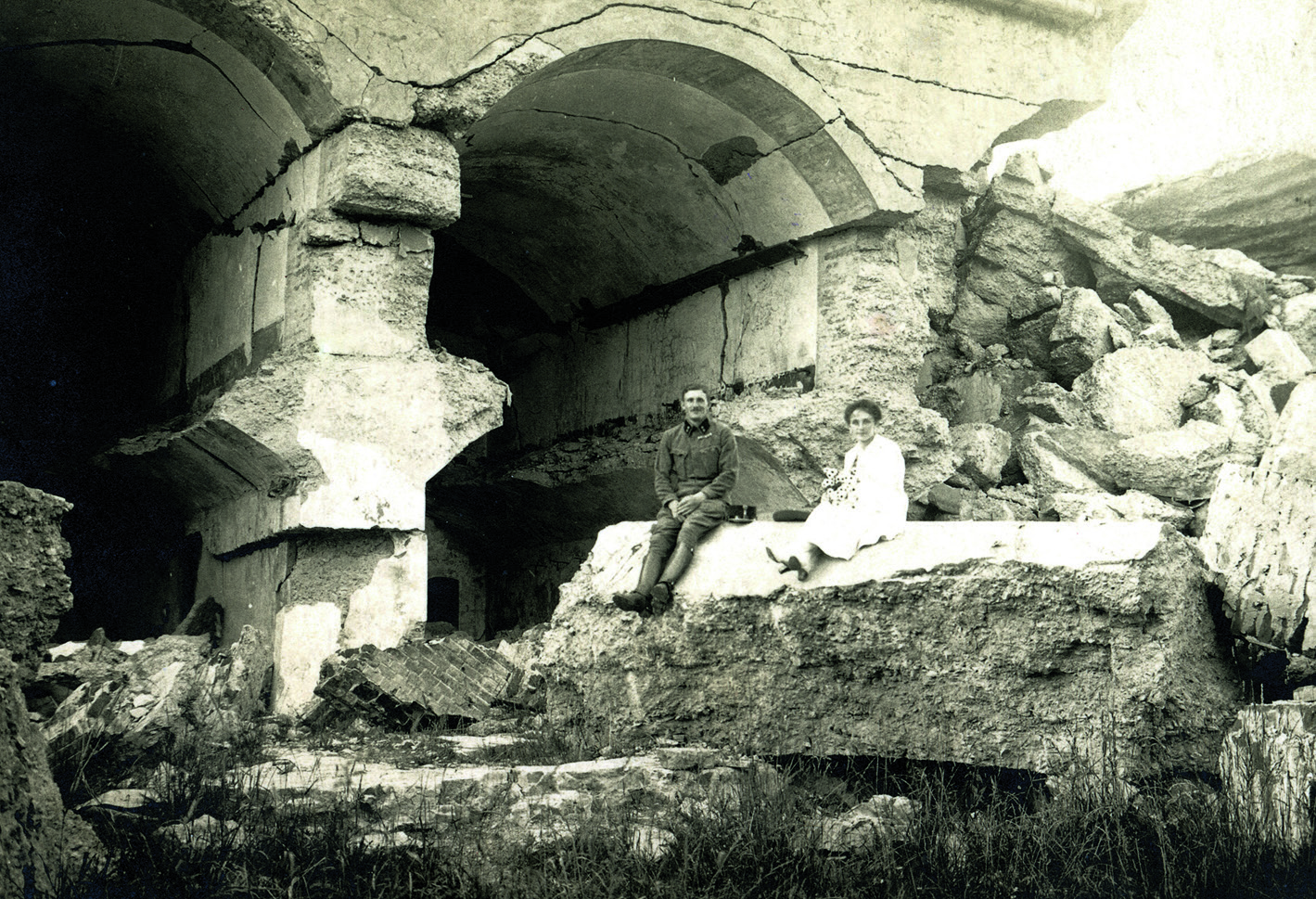
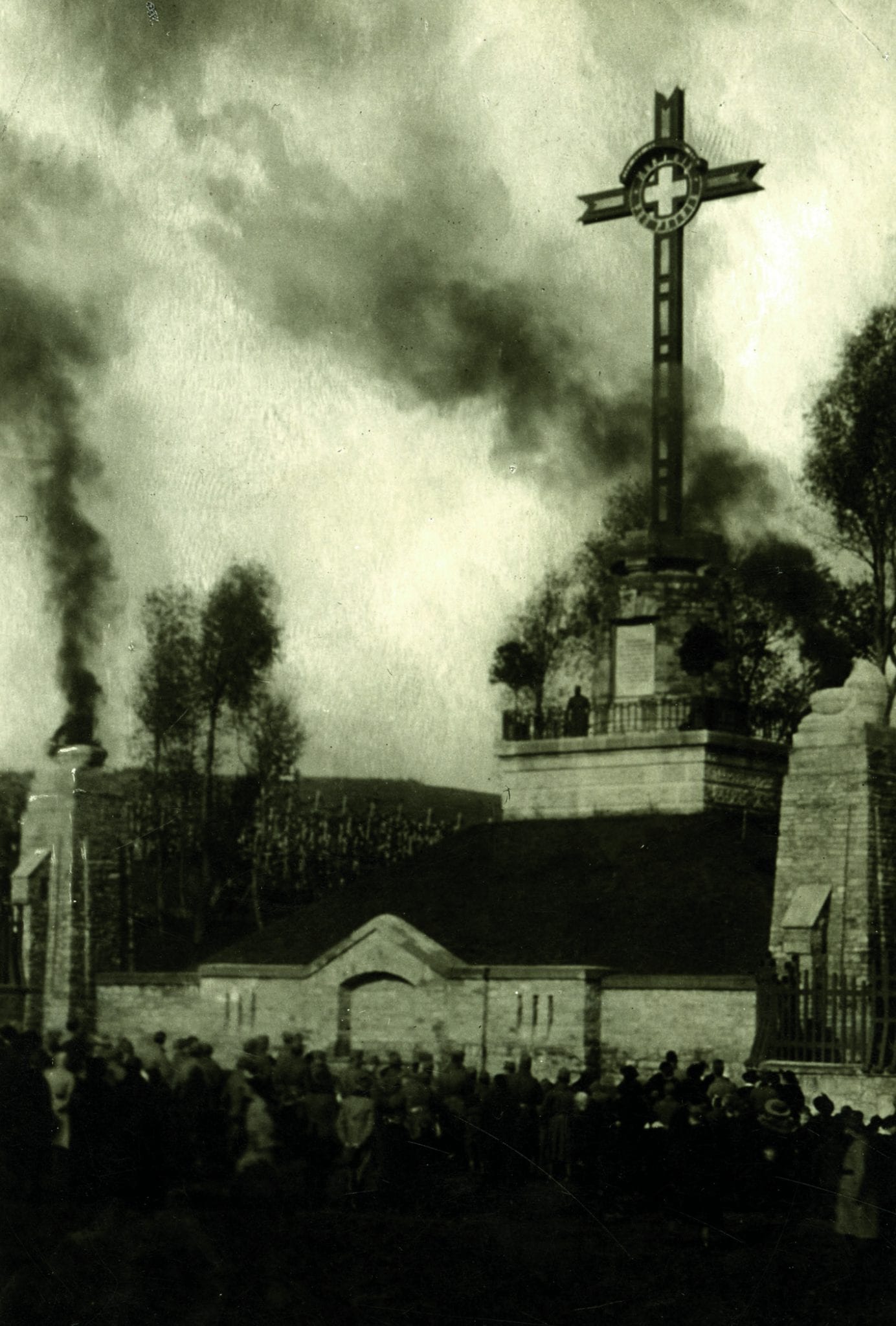
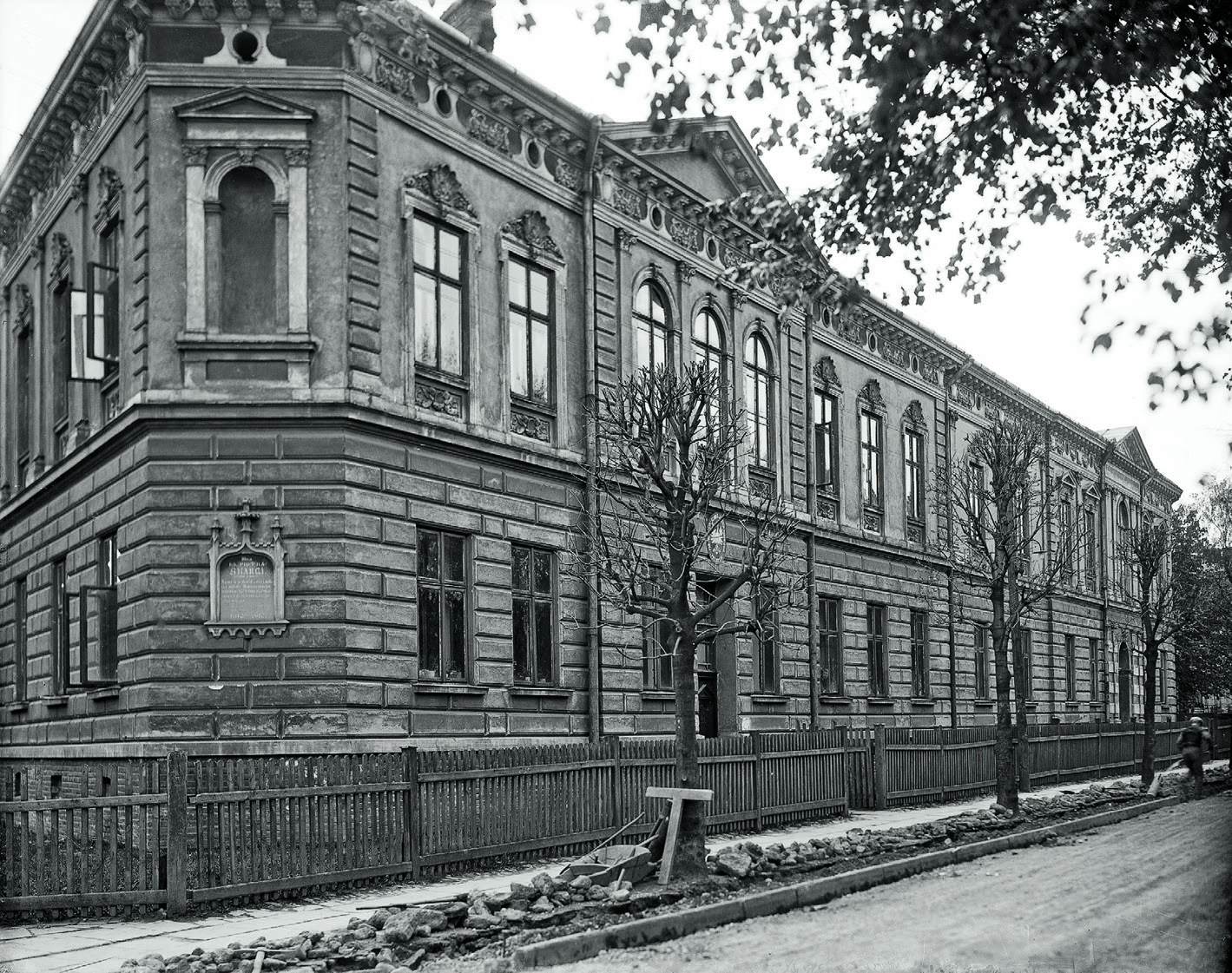
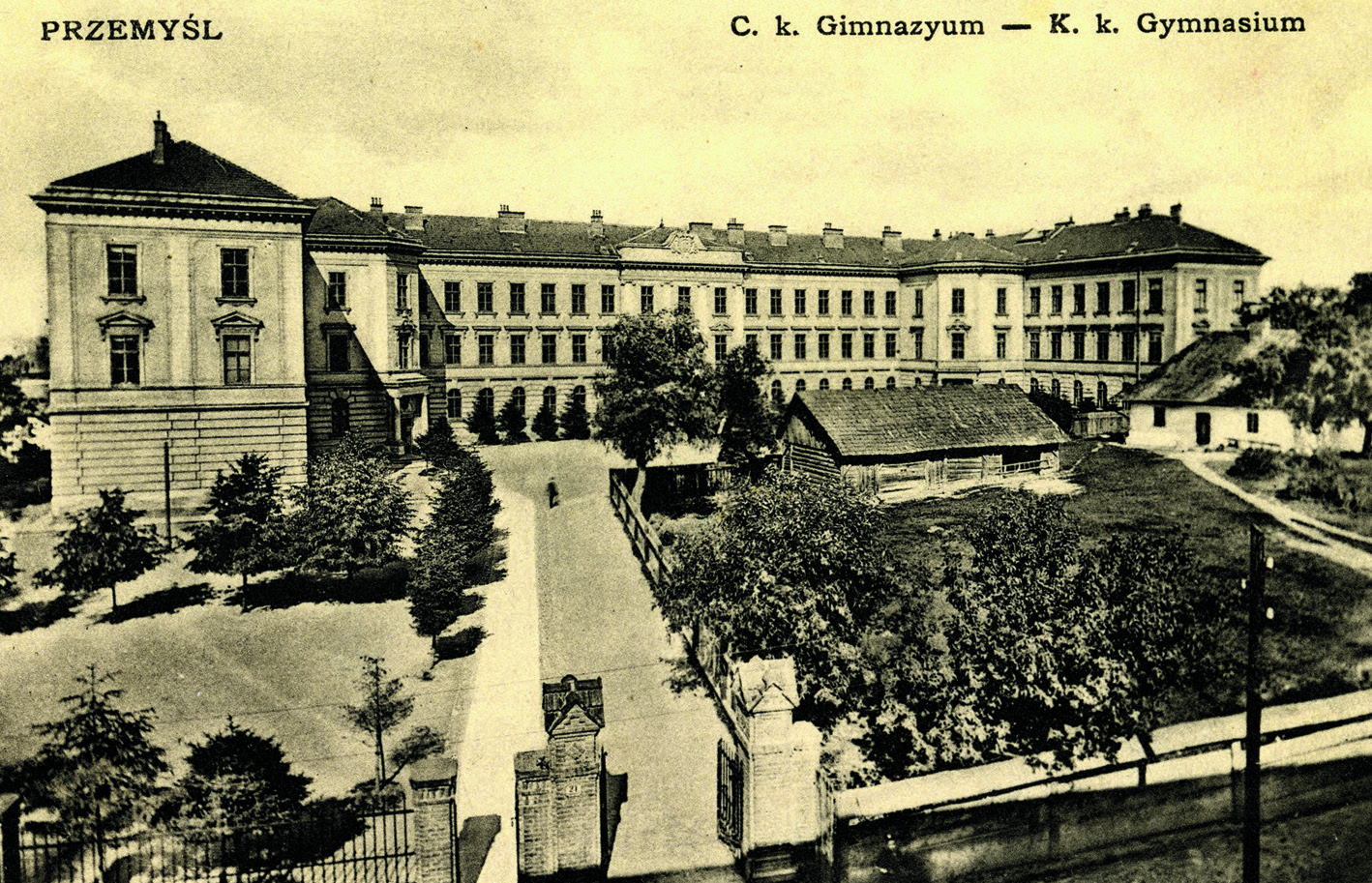
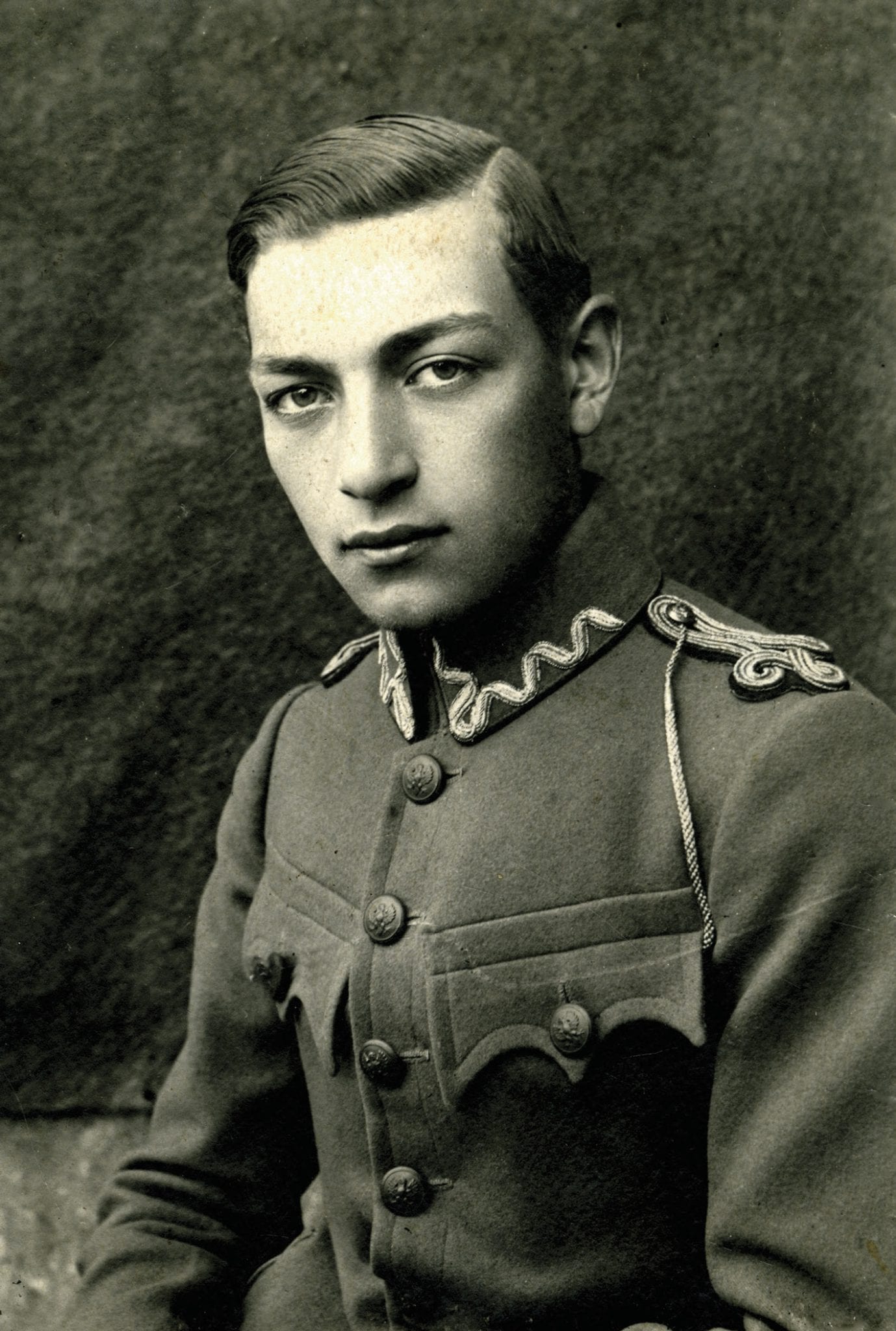 Jozef Klugman - killed in November 1918 in the barracks of the 37th pp in Zasan
Jozef Klugman - killed in November 1918 in the barracks of the 37th pp in Zasan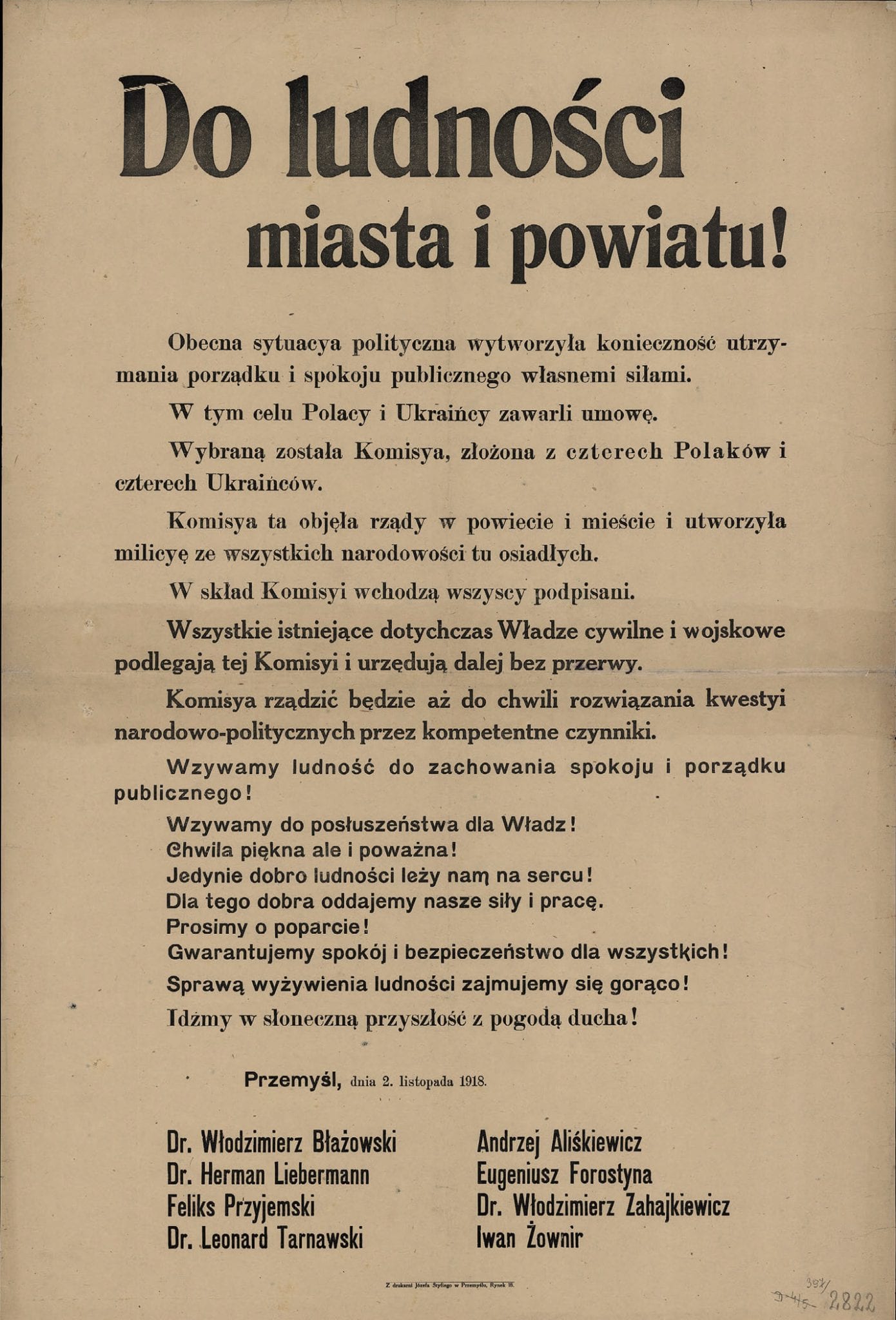

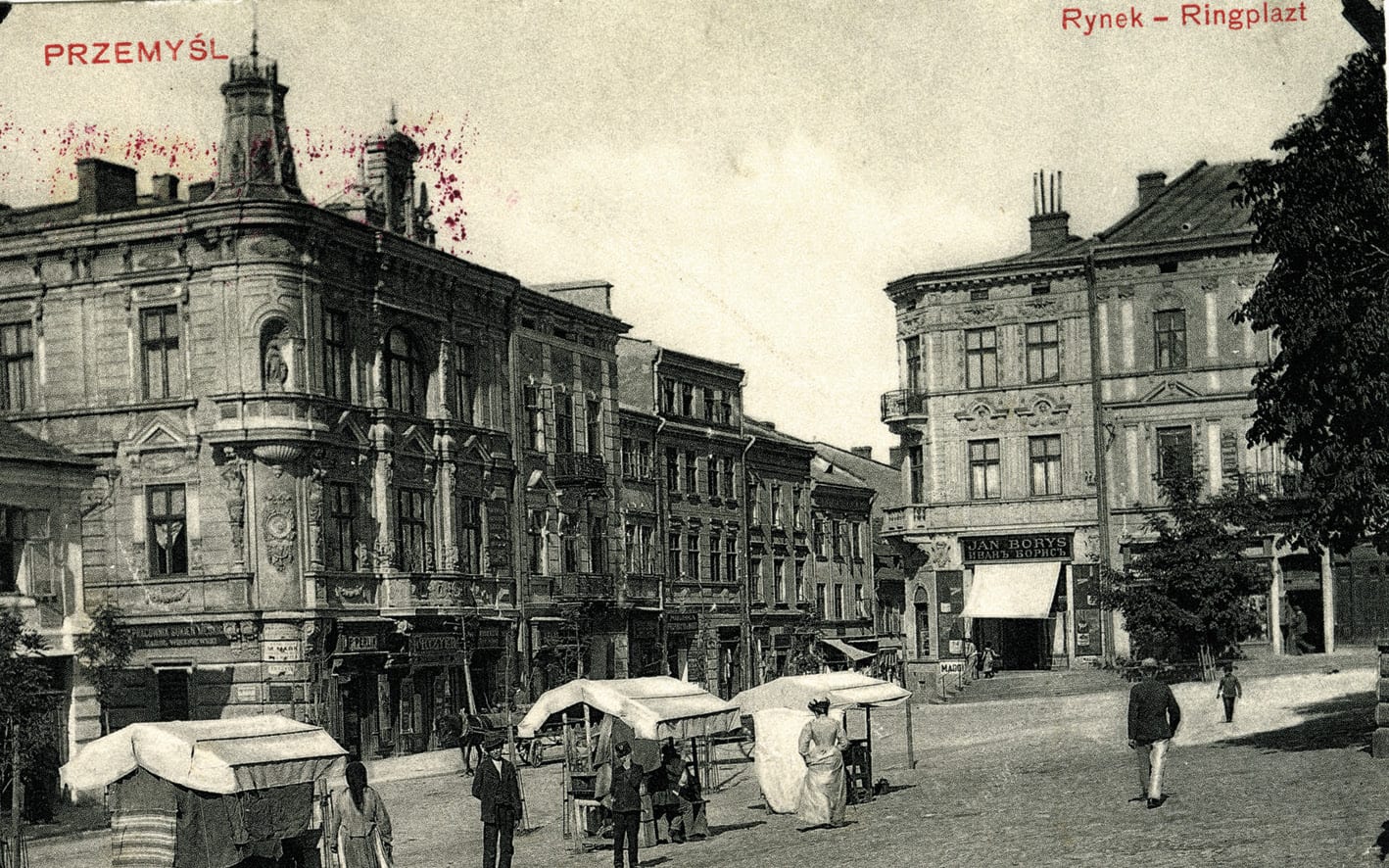
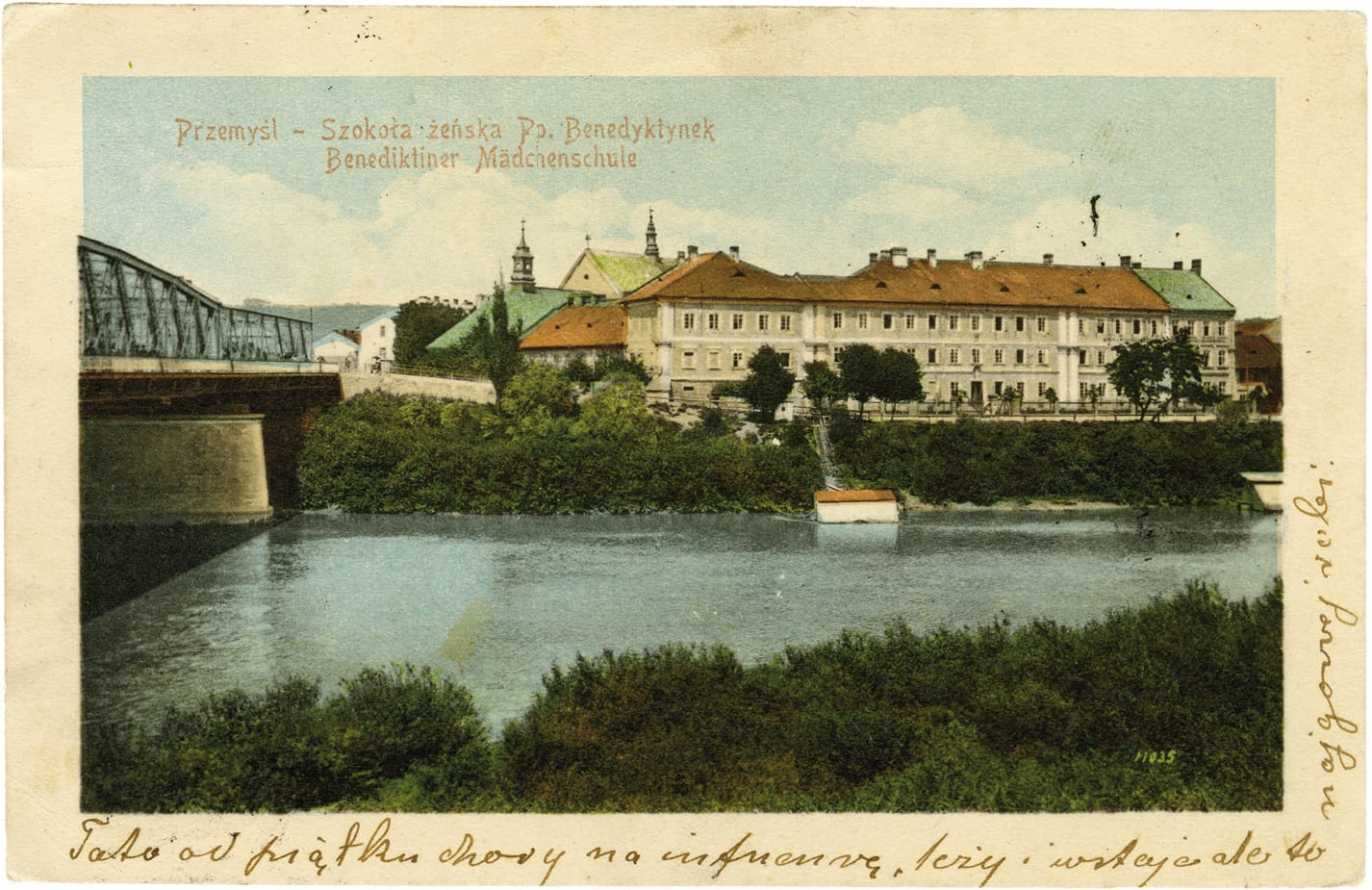
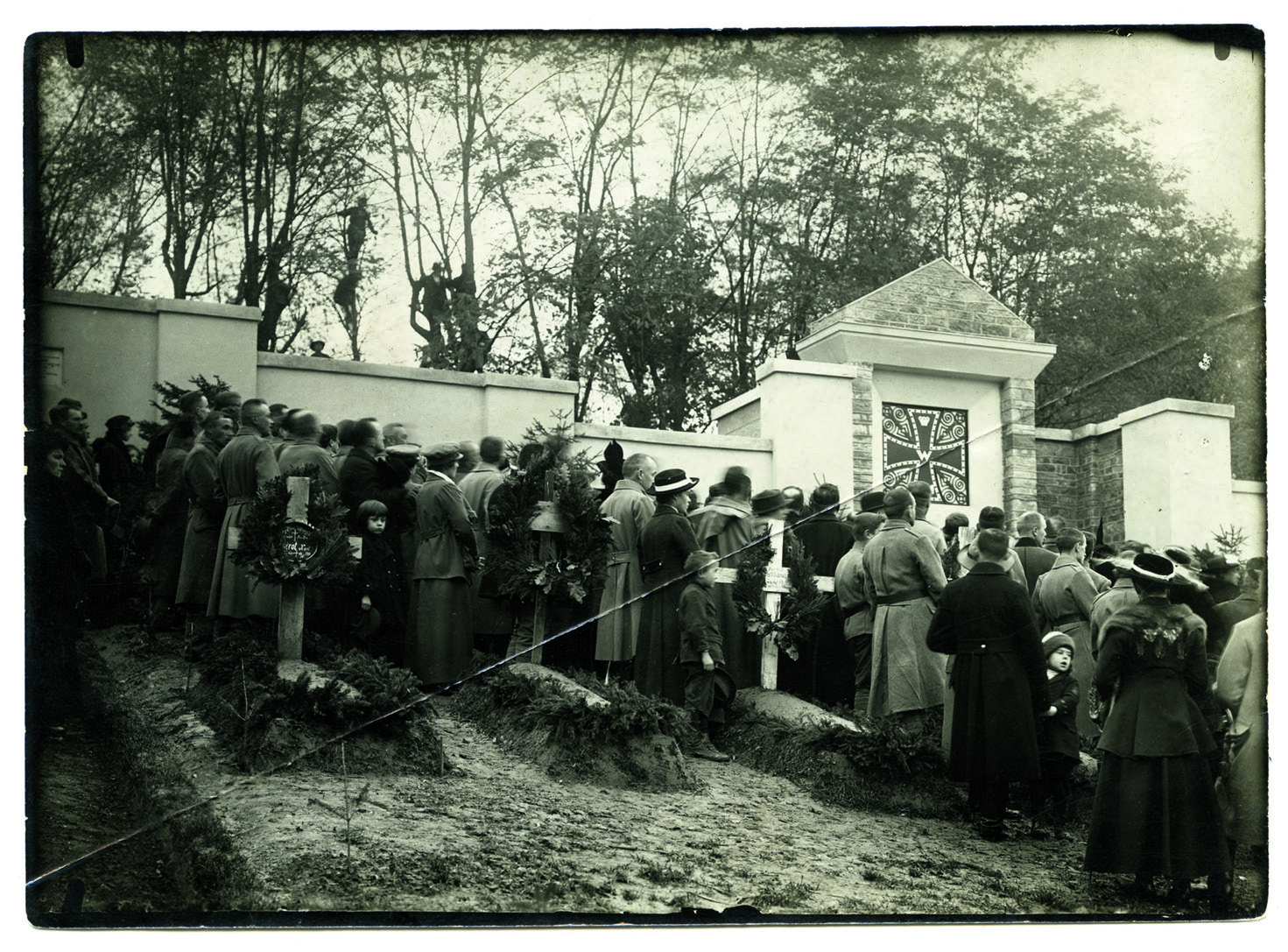

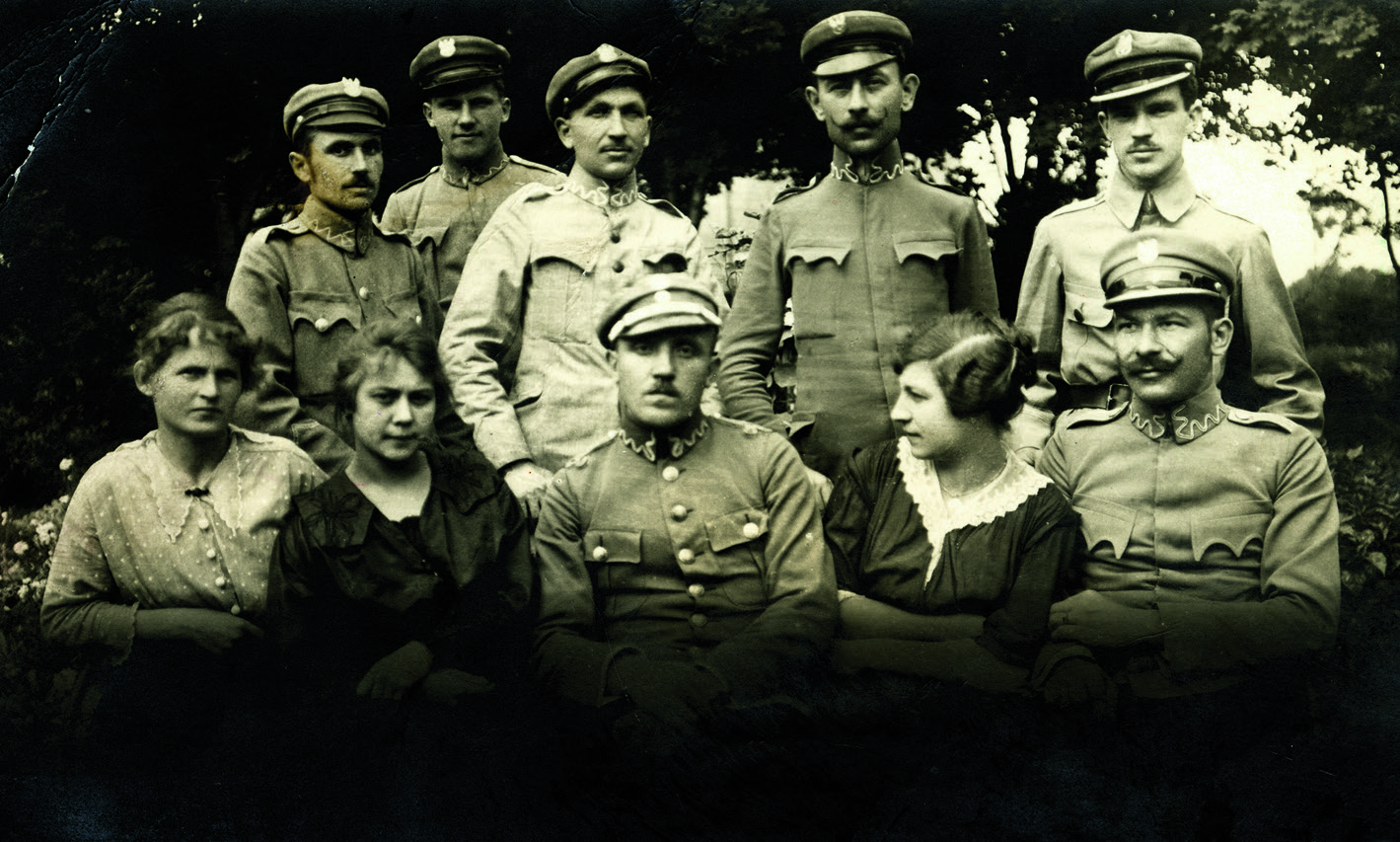
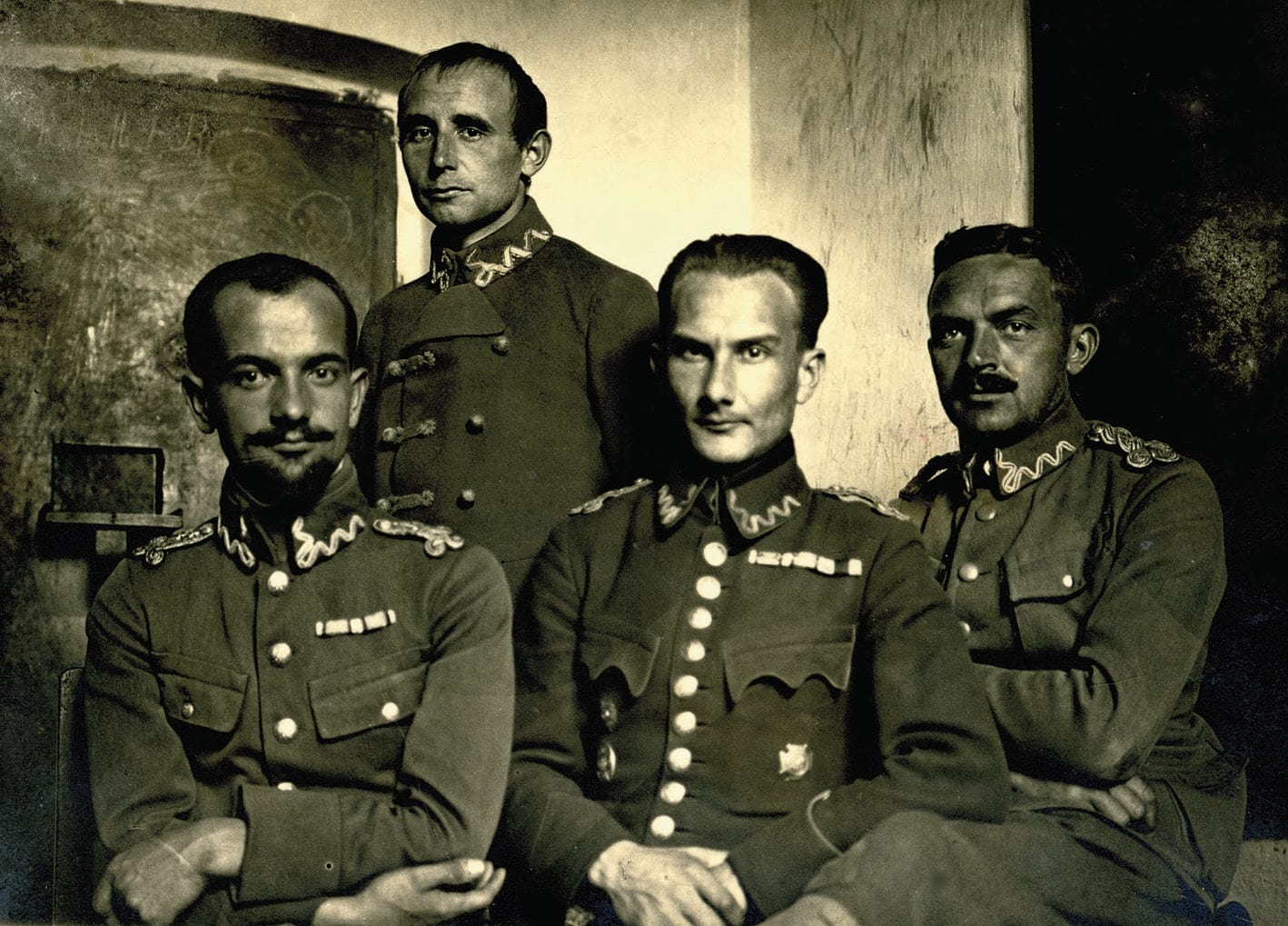
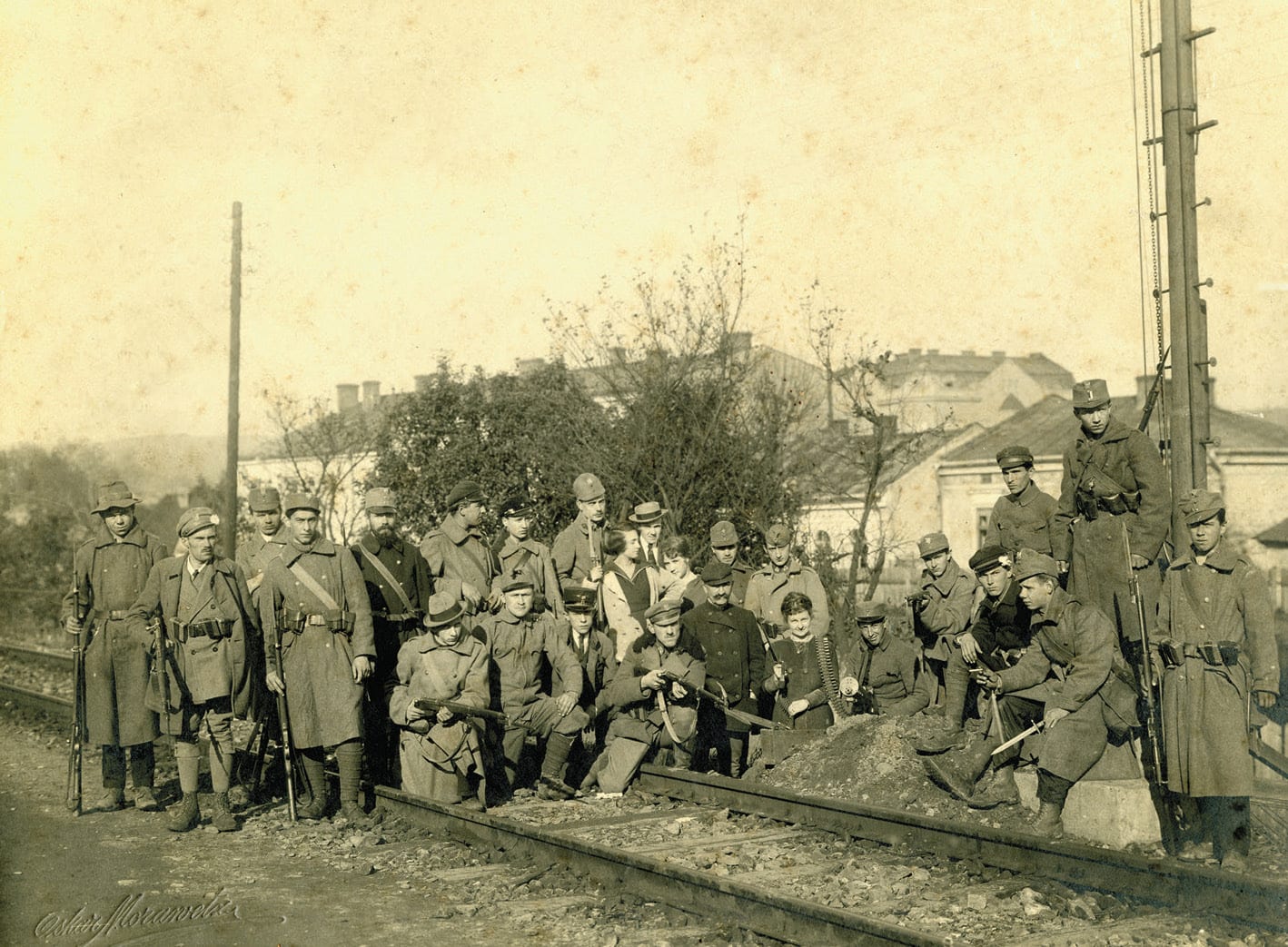
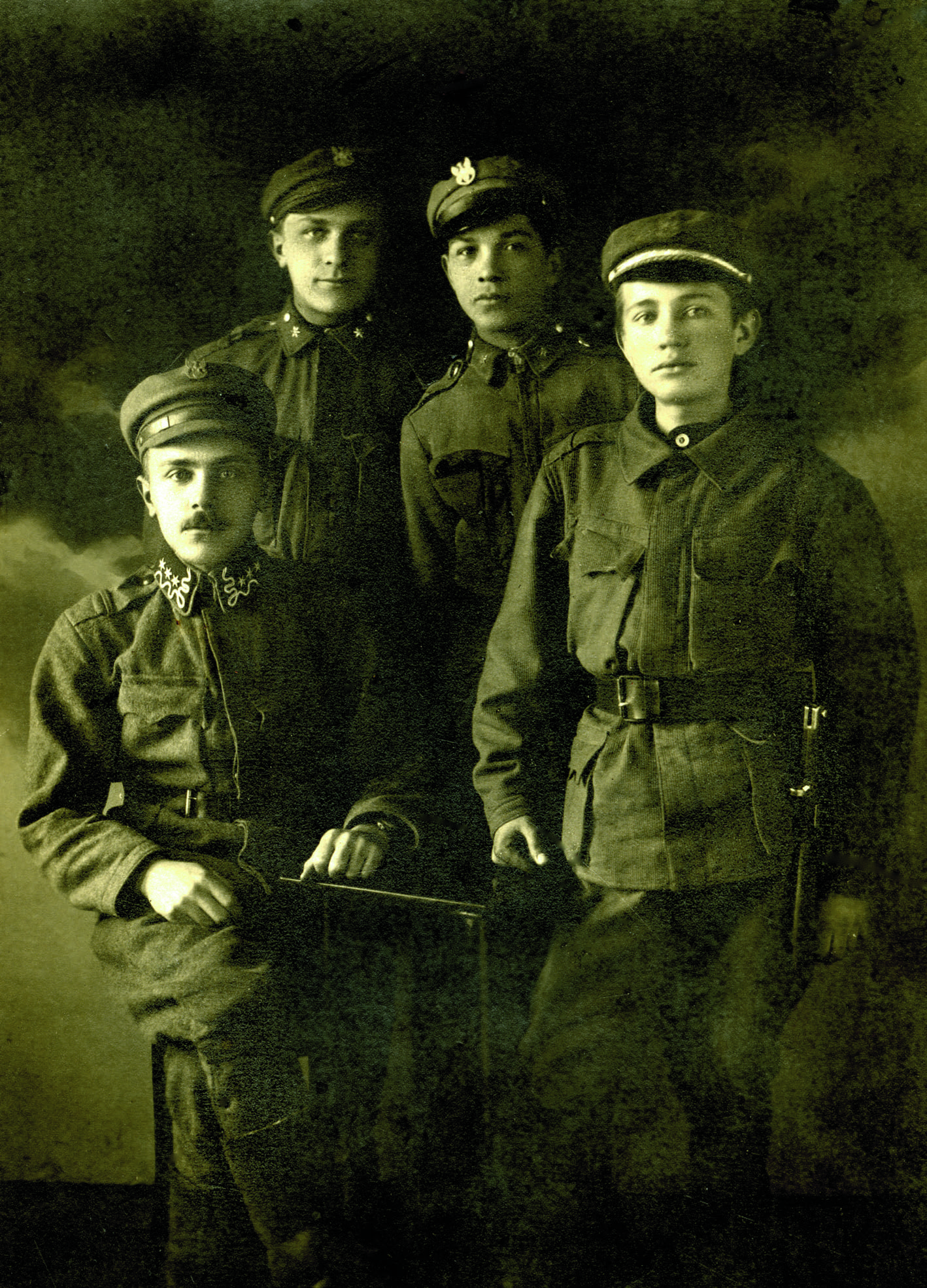
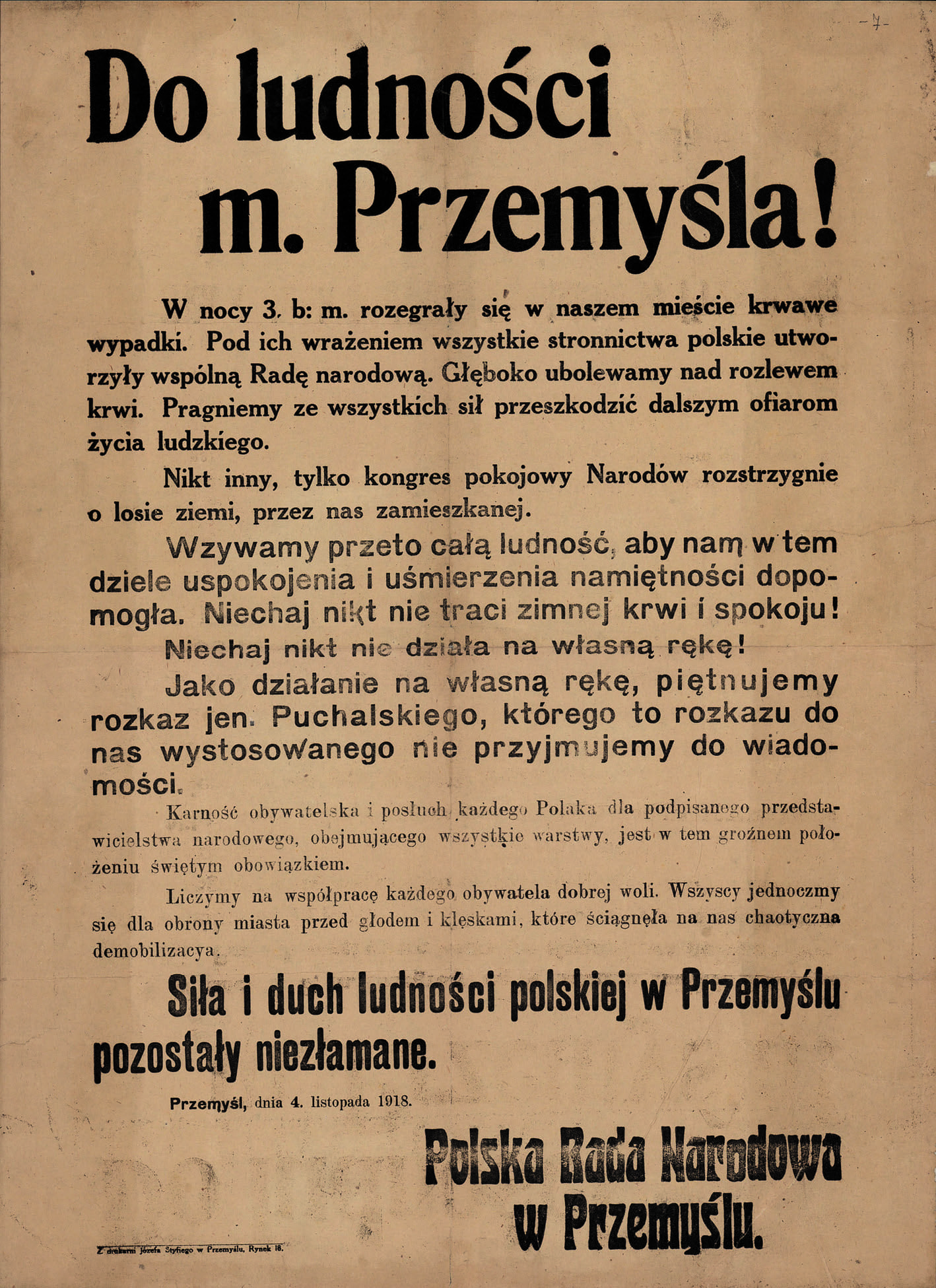
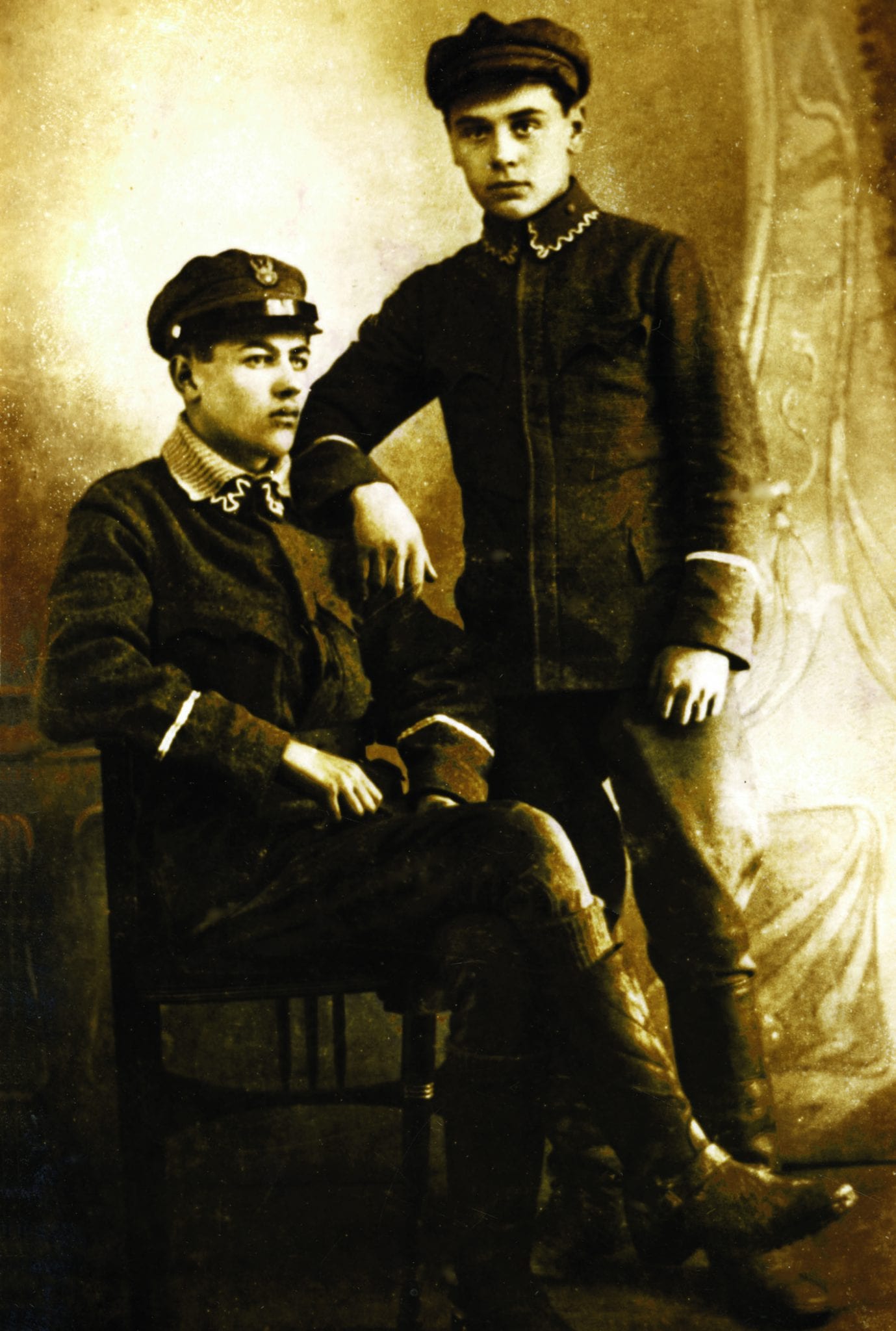
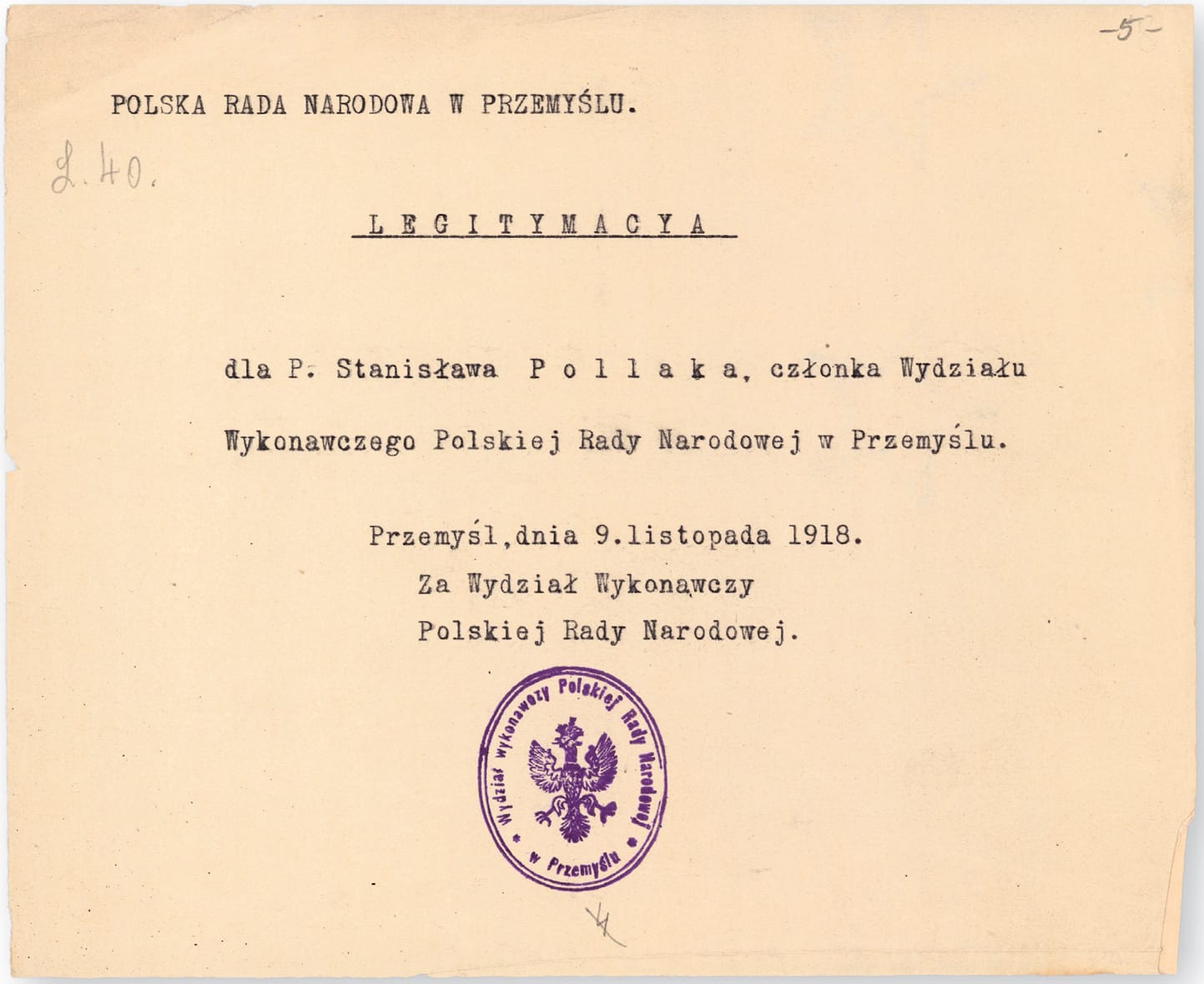
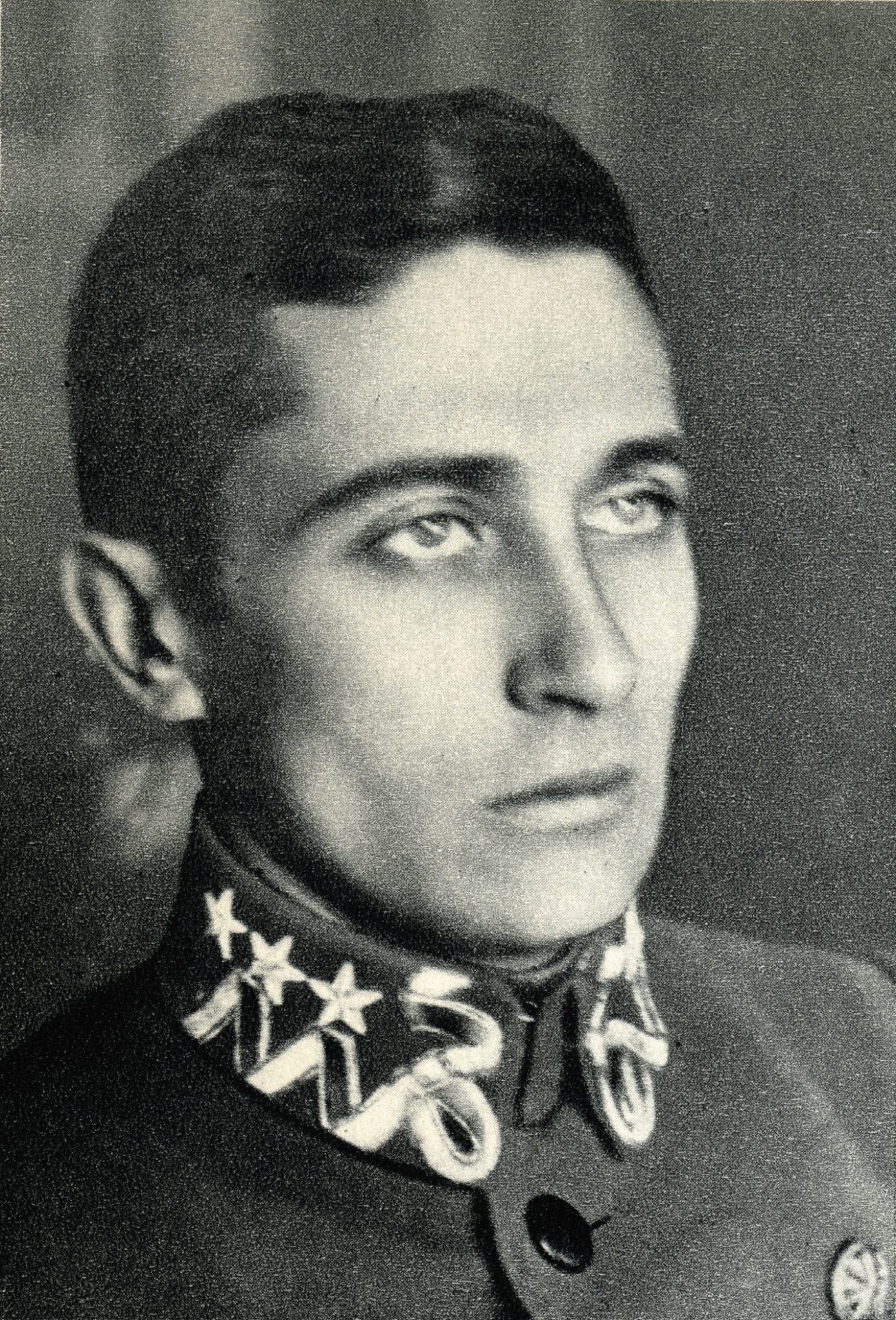 Major Julian Stachiewicz, commander of the relief of Kraków, commander-in-chief at the Battle of Przemyśl on November 11-12, 1918
Major Julian Stachiewicz, commander of the relief of Kraków, commander-in-chief at the Battle of Przemyśl on November 11-12, 1918